Michael decided to stay on the boat today (the 28th) because he got quite overheated yesterday. I was originally thinking I would do the same, but – really – when will we be in Dubrovnik again?! So, I planned a little itinerary for myself. My plan was to ride the cable car, visit the War Museum, check out the Foundry Museum, then stop for groceries on the way back to Seahike.
I walked this time, rather than taking the bus. It was much quicker. I took a few pictures along the way. I love this one of the coastline.
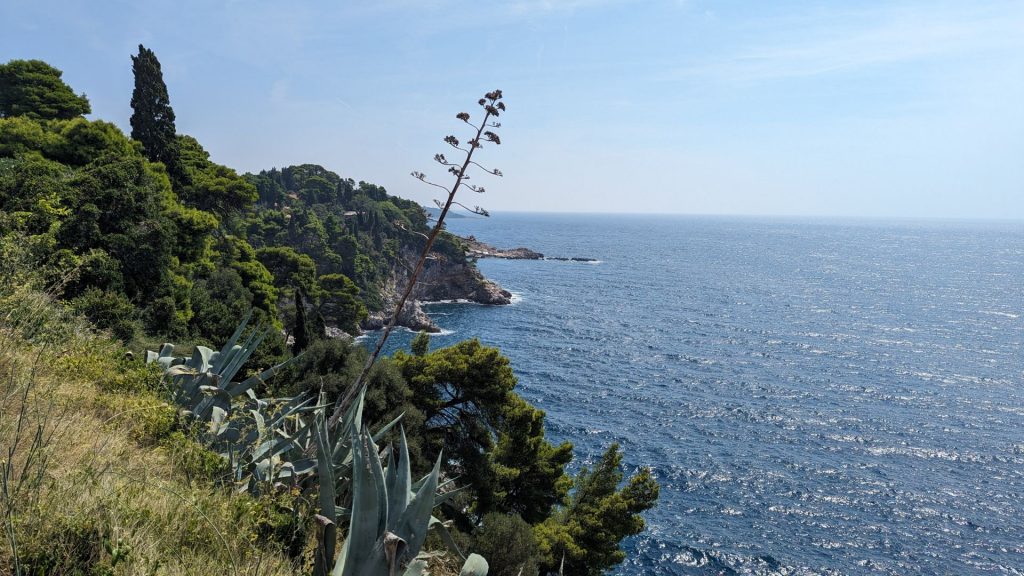
As I passed one small section of chain link fence, I saw all of these padlocks on it. I had no idea what they were but took a picture. I am glad I did, because I looked it up later and it is a sweet thing. It is Dubrovnik’s Love Lock Wall.
The fence is awash with pledges of undying love from all over the world. Padlocks with the initials, messages, hearts and poems are snapped into place on the fence and the keys are then thrown in the sea. It is the modern day version of carving your names in a tree trunk, but one more environmentally friendly.
“Love U 4ever,” from a Swiss couple – “Be my Valentine” in French and “U complete me” from Juan in Mexico. The Dubrovnik love fence is as international as the guests that land every summer.
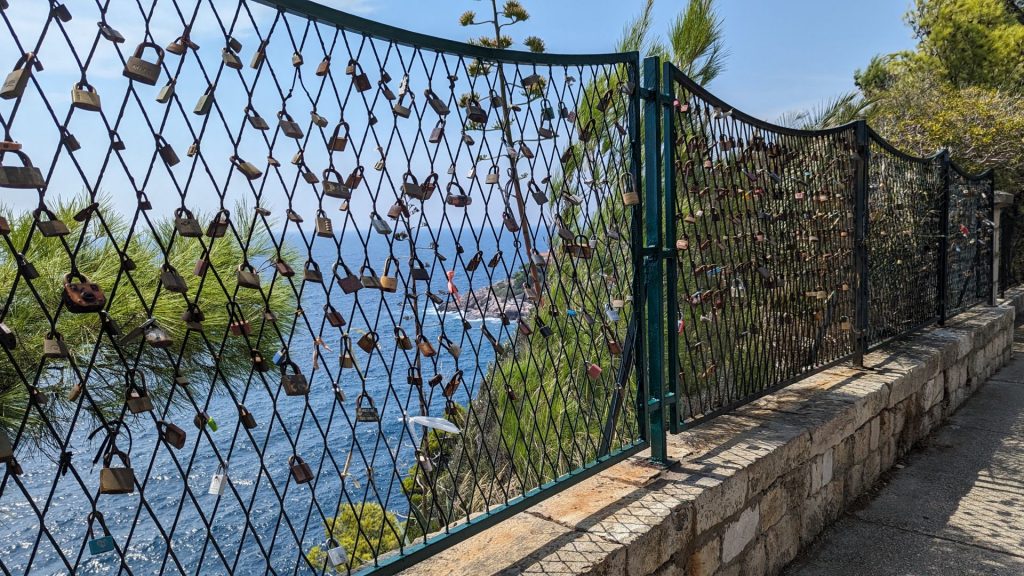
I got to the cable car ticket office and discovered that the cable car was closed due to high winds at the top. Okay, that knocked the first two items off of my itinerary (the Military Museum is located at the top stop of the cable car). I decided to go to the Rector’s Palace in Dubrovnik Old Town instead. It had been on our itinerary the previous day but we hadn’t visited it. (I should note that the entry fee to the Palace and to the Dubrovnik Walls are both included – among other things – in the purchase of a Dubrovnik Pass. It is definitely worth it to buy the pass if you plan to see a few sites.)
First, a bit about the Rector’s Palace and Ragusa:
The Rector’s Palace used to serve as the seat of the Rector of the Republic of Ragusa between the 14th century and 1808. It was also the seat of the Minor Council and the state administration. Furthermore, it housed an armory, the powder magazine, the watch house and a prison. Rector’s Palace isn’t what you think of when you imagine a monarch’s residence. Perhaps, that’s because each rector only lived there for one-month stints at a time.
The Republic of Ragusa (Dalmatian: Republica de Ragusa; Croatian: Dubrovačka Republika; Venetian: Repùblega de Raguxa) was an aristocratic maritime republic centered on the city of Dubrovnik (Ragusa in Italian, German and Latin; Raguxa in Venetian) in South Dalmatia (today in southernmost Croatia) that carried that name from 1358 until 1808. It reached its commercial peak in the 15th and the 16th centuries, before being conquered by Napoleon’s French Empire and formally annexed by the Napoleonic Kingdom of Italy in 1808. It had a population of about 30,000 people, of whom 5,000 lived within the city walls. Its motto was “Non bene pro toto libertas venditur auro“, a Latin phrase which can be translated “Liberty is not well sold for all the gold”. (Wikipedia)
The Palace is now the Cultural History Museum, with artfully restored rooms, portraits, coats of arms and coins, evoking the glorious history of Ragusa. The History Department of the Museum of Dubrovnik has operated in the palace since 1872.
I am not always a fan of museums, but this one sparked my interest. It has a wonderful variety of items on display. Some were portraits. Here are some of my favorites:
This guy, Marin Getaldić (Ghetaldi) (Dubrovnik, 1568 – Dubrovnik, 1626), was a physicist and the first Croatian mathematician of European rank. He was born in Dubrovnik in 1568 into a patrician family as one of the six children of Maro Getaldić and Anica Restić (Resti). He finished primary school in Dubrovnik. During his lifetime was a member of the governmental bodies of the Republic, also carrying out various matters of a governmental or official nature.
He studied mathematics in Antwerp and Rome, and toured Europe, making contacts with all the important European mathematicians of his age, which was crucial for his scientific work. He was also in contact with Gelileo Galilei. He wrote seven scientific works. His principle work, De resolutione et compisitione mathematica, (On Mathematical Analysis and Synthesis, Rome, 1630), had a considerable effect on the application of algebra to geometry, even before the discovery of analytical geometry.
He was famed for his numerous experiments in optics. He researched parabolic mirrors, constructing them himself and performing various experiments. One of his parabolic mirrors is kept in the National Maritime Museum in Greenwich.
Two notable localities in Dubrovnik are associated with the name of Getaldić: Bete’s Cave, named after Marino’s nickname, where he conducted experiments with igniting mirrors; and Pozvizd, a key strategic tower in the Ston fortification system which he was commissioned to build by the authorities of the Republic of Dubrovnik in 1604.
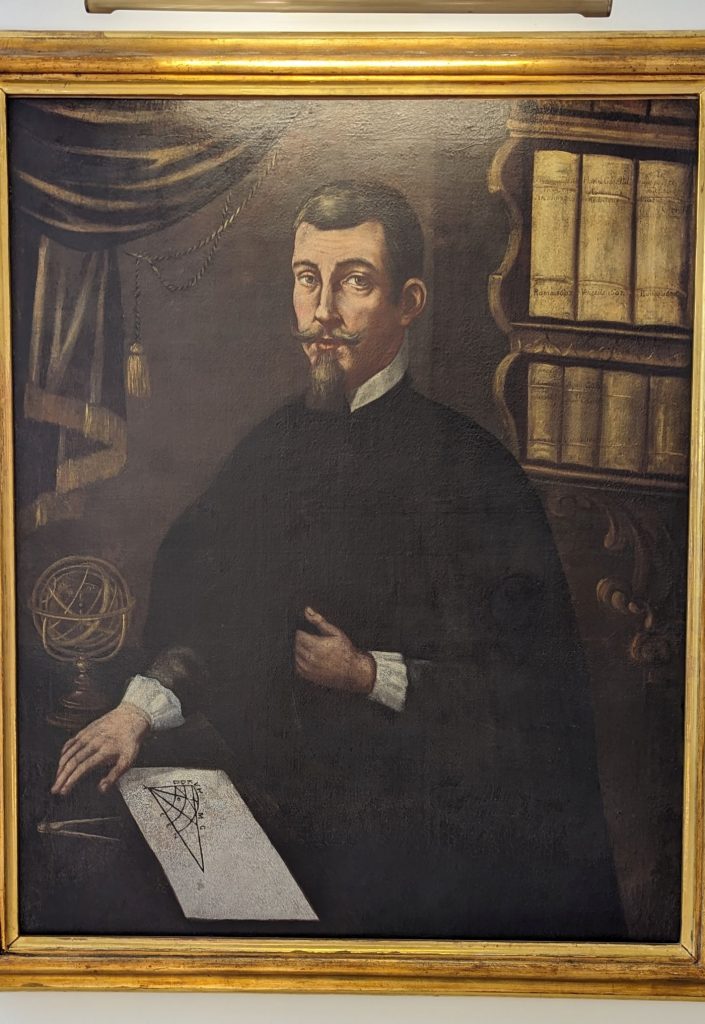
This next guy, Tomo Basiljević (Bassegli) (Dubrovnik, 1756 – Dubrovnik, 1806), was the principal representative of the Enlightenment in Dubrovnik. Member of an old landowning family, he was a member of the governing bodies of the Republic and carried out various duties for the state. He studied law, according to the wishes of his parents, in Berne and Göttingen, to which he went at the recommendation of an Italian natural historian and travel writer Alberto Fortis, although he was more interested in natural sciences. Abroad, where he spent many years, he became acquainted with contemporary philosophical trends and Enlightenment ideas, which had an effect on his intellectual and ideological development. In 1792 he returned to Dubrovnik and worked in the progressive and democratic Patriotic Society, which was a kind of academy. The leading Francophile in Dubrovnik, he was sent in 1806 to meet General Lauriston of the French army; however, he did not manage to prevent him from taking Dubrovnik.
His works are extant mainly in manuscript. In his major work, Plan de réforme de la constitution de la Republique de Raguse, he dealt with the reorganization of the social and economic system of the Dubrovnik Republic. He advocated the liberation of the regions of Croatia under the leadership of France and the creation of a federal Illyrian Republic, with Dubrovnik as its capital. Although on the whole unrealistic in his ideas, with his progressive and democratic ways of thinking he made a considerable contribution to the Enlightenment in Croatia.
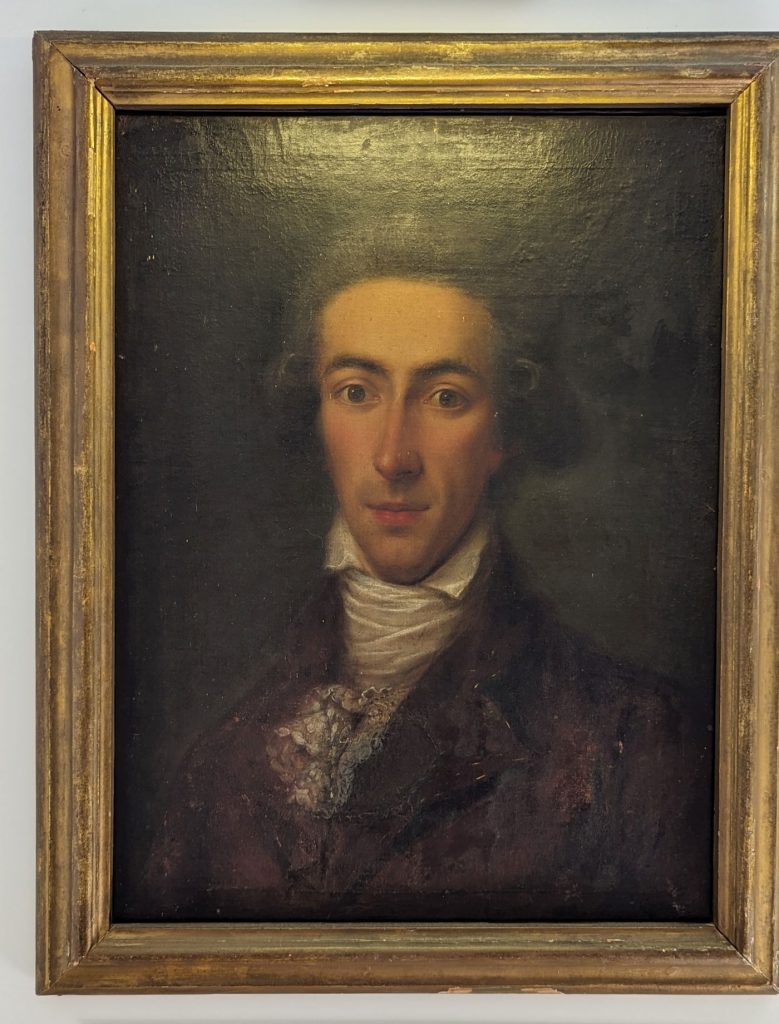
This next woman . . . . I’ll just let the painting speak for itself. Her hair! Her hat!
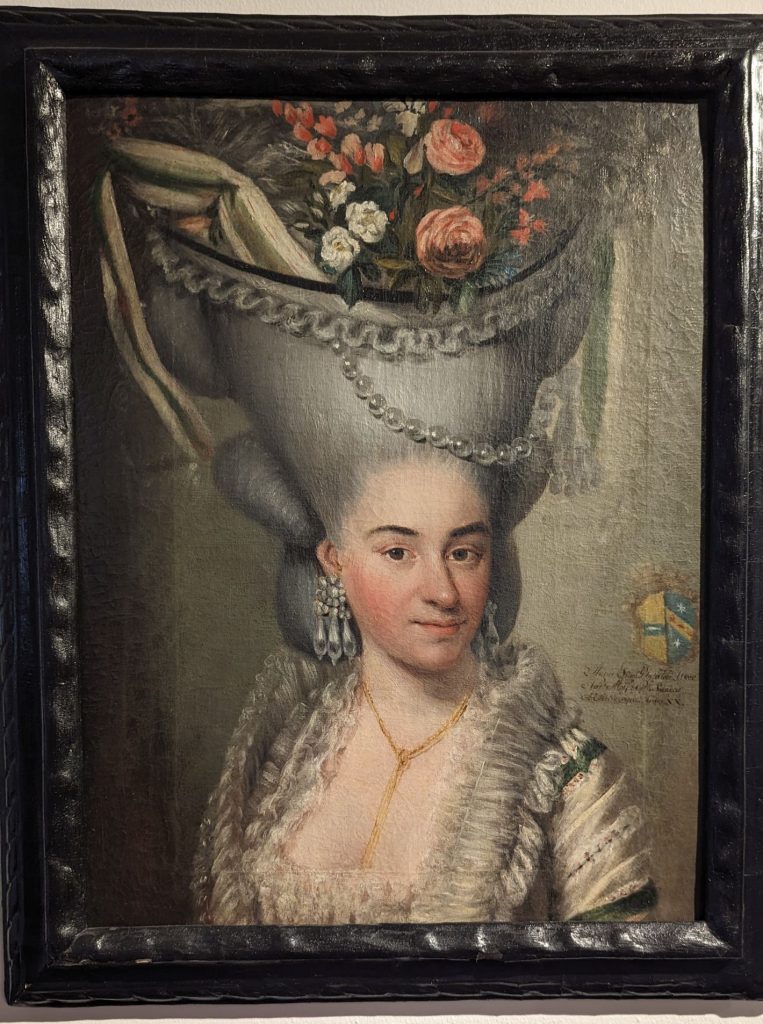
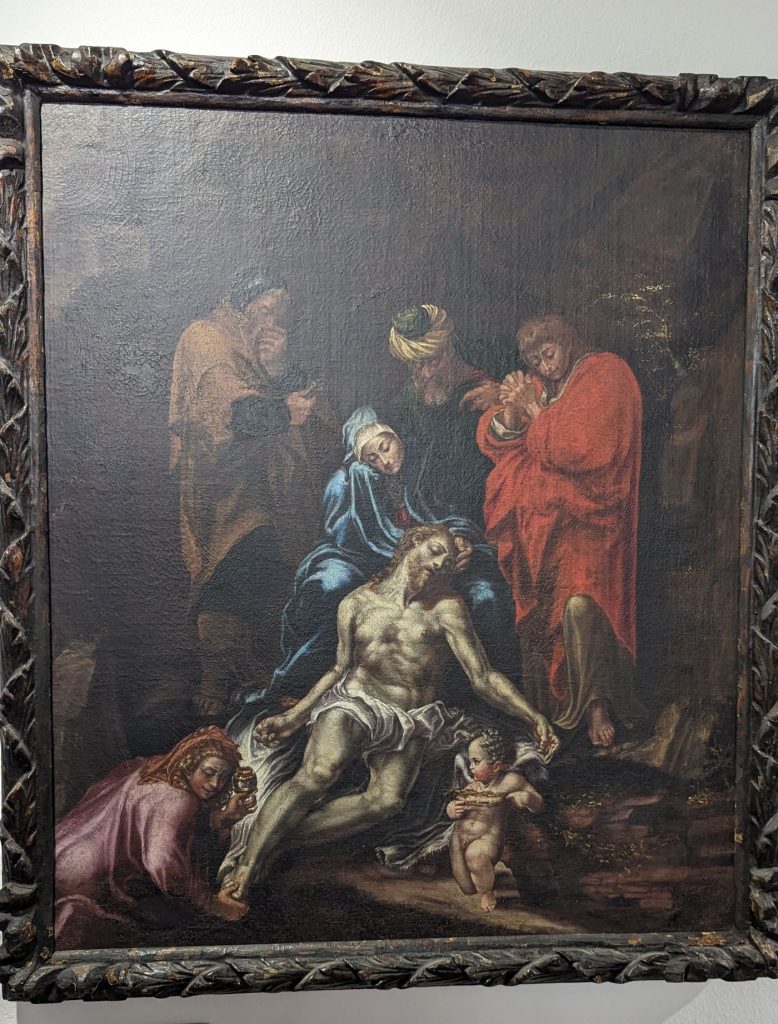
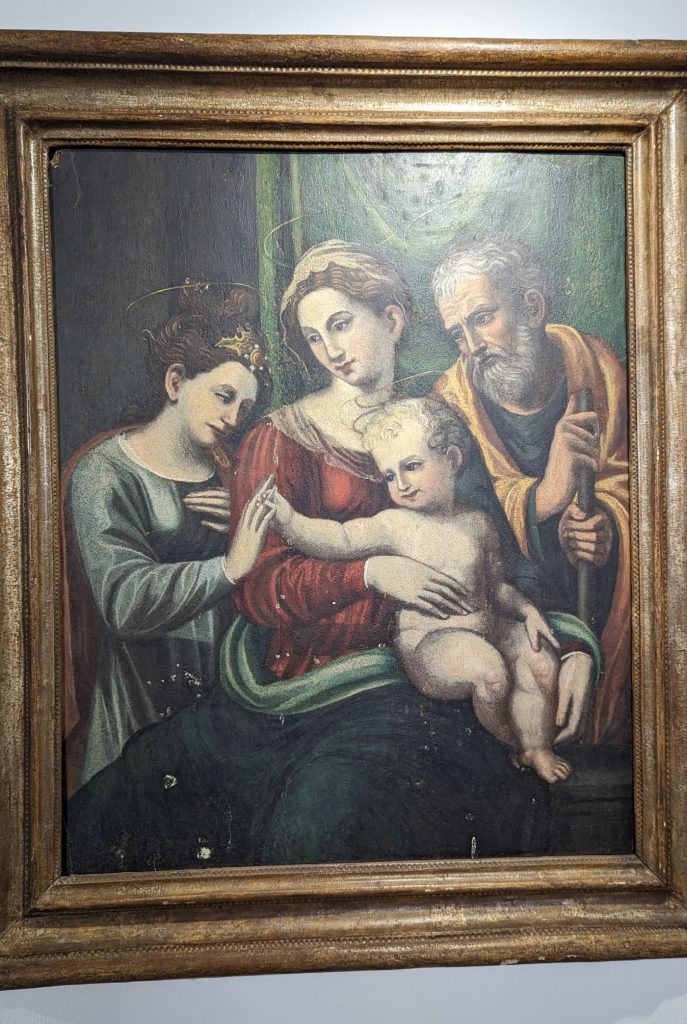
The figures in the following picture were probably created in 1478, as indicated by a decision of the Minor Council to have two bronze human figures made for striking the hours on the city bell tower. It is assumed that they were created according to the design of one of the most important builders of the time in Europe, Tuscan architect and sculpture Michellozo Michelozzi di Bartolomeo (Florence, 1396 – Florence, 1472), whom the Dubrovnik republic invited to reinforce and upgrade the city’s fortifications. The founder might probably have been Michellozi’s Italian associate, Michele di Giovanni of Fiesole, who was also in the service of the state of Dubrovnik in the second half of the 15th century, and at the order of the Minor Council in 1478 cast a new bell for the city campanile. (I should note that they were almost – or possibly were – life size.)
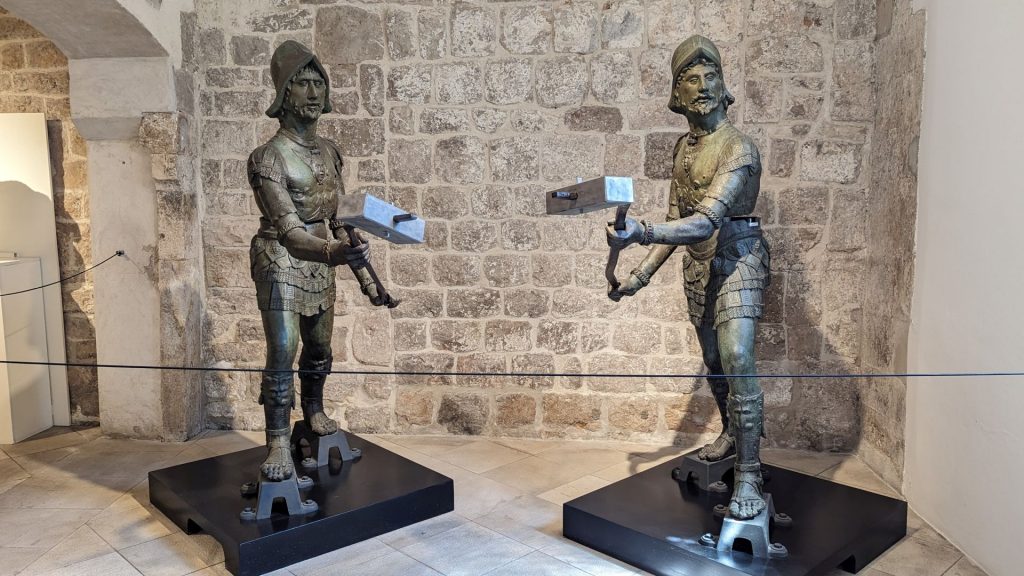
There was space dedicated to iron chests of various sizes, from a sofa table to a chest of drawers. The iron chest was a portable money-box/container used for keeping money, documents, and other valuables. They are made of wood, iron, or a combination of both. They were made during the period between the 16th and 19th centuries. Underneath the lid is a very intricate locking mechanism consisting of up to twelve bolts which is often covered by a decorative metal panel for the purpose of hiding the bolts. The metal panels often feature various animal motifs and floral decorations making them the most aesthetic and artistic part of the iron chests. Iron chests are valuable examples of the blacksmith’s and locksmith’s craft of that era.
Today, Europe has preserved very few of these iron chests, even though in the past their production was considerable. As such, the exhibited pieces represent rare and elaborately ornamented works with the locksmith’s technique at its most brilliant. Among them, the most representative examples are the so-called armada chests. They were made entirely of iron and produced in Nuremberg, Germany from the 16th to the 18th century, but their name originates from the 19th century. It is believed that these types of chests were found in the shipwrecks of the Spanish Armada.
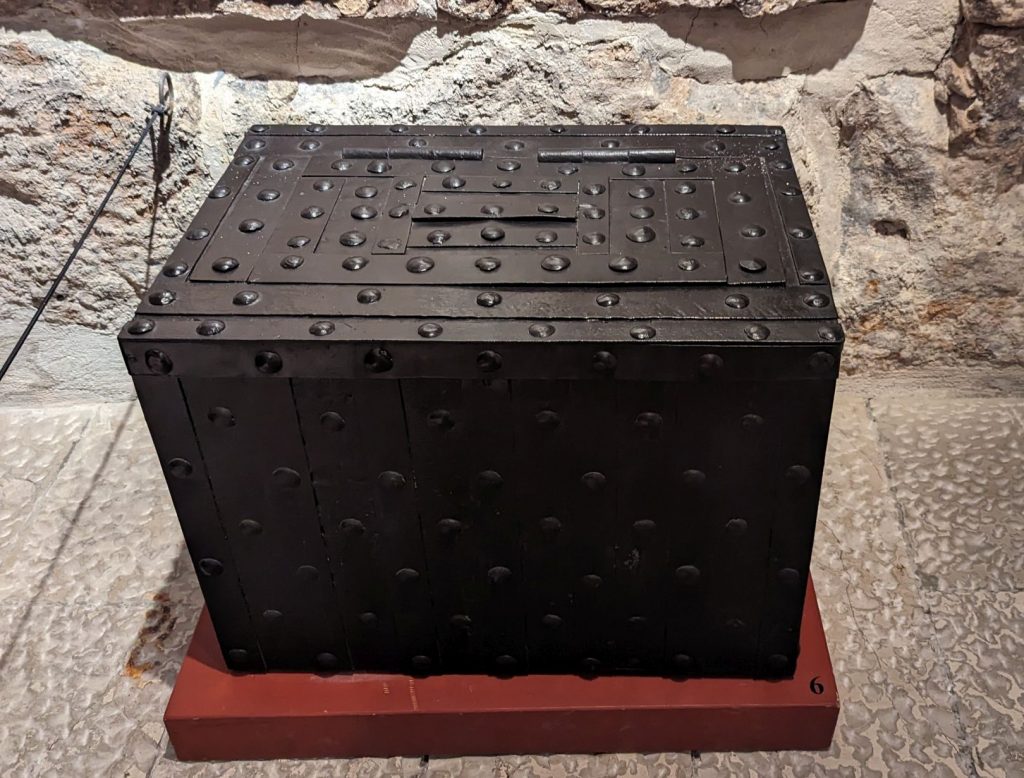
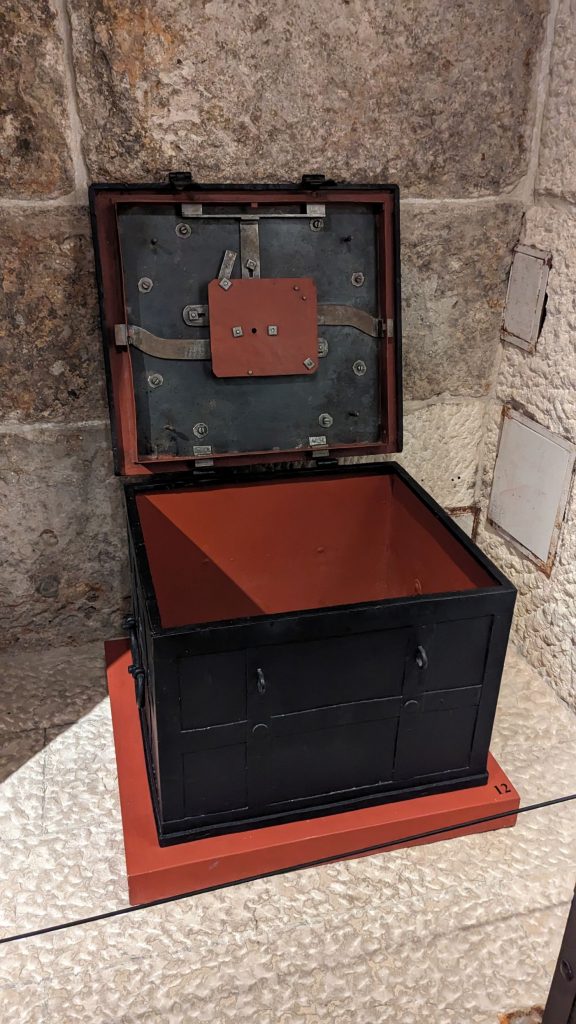
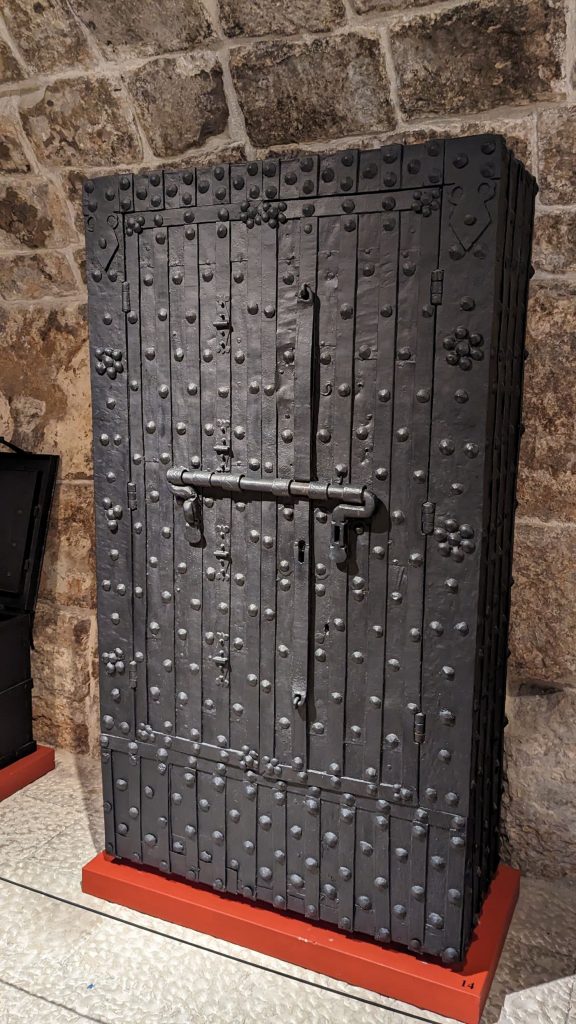
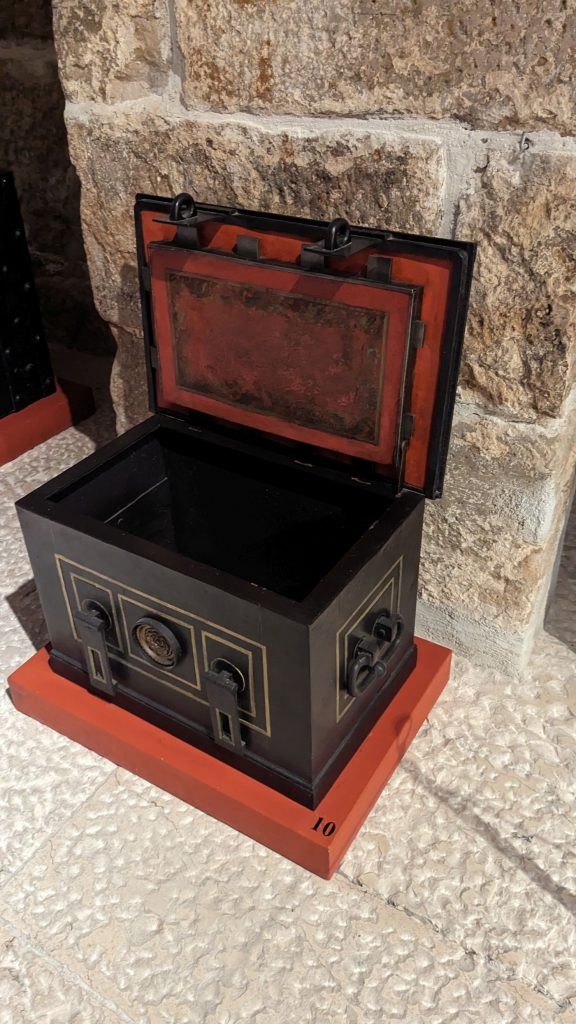
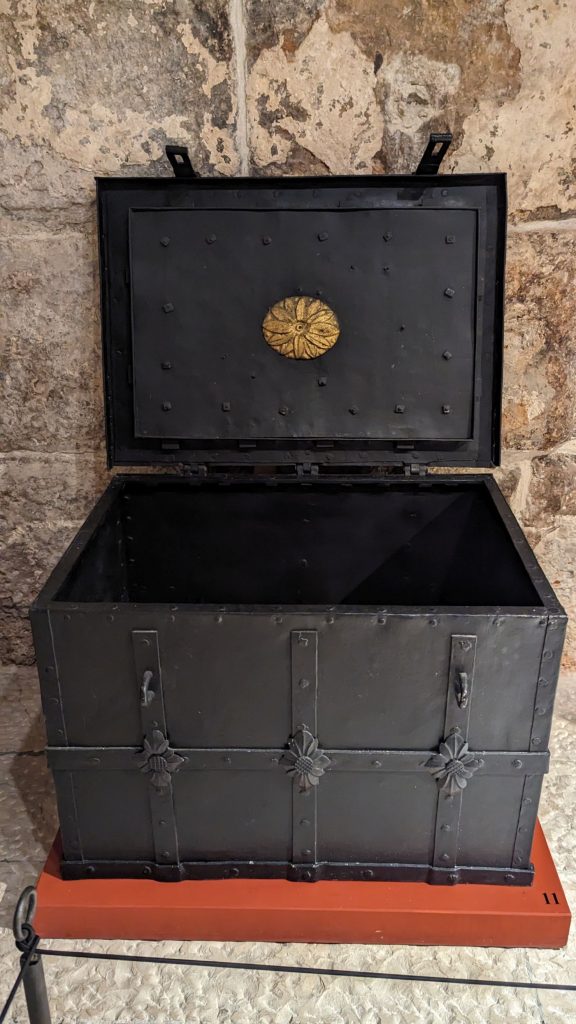
Let’s move on and look at some clothing. I don’t have any text to accompany the pictures, but I like the clothing!
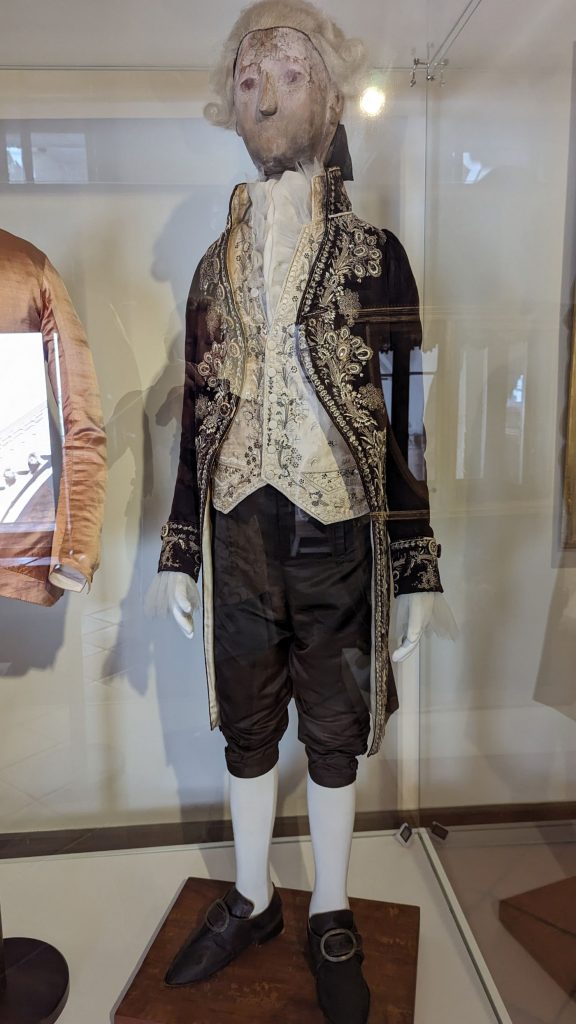
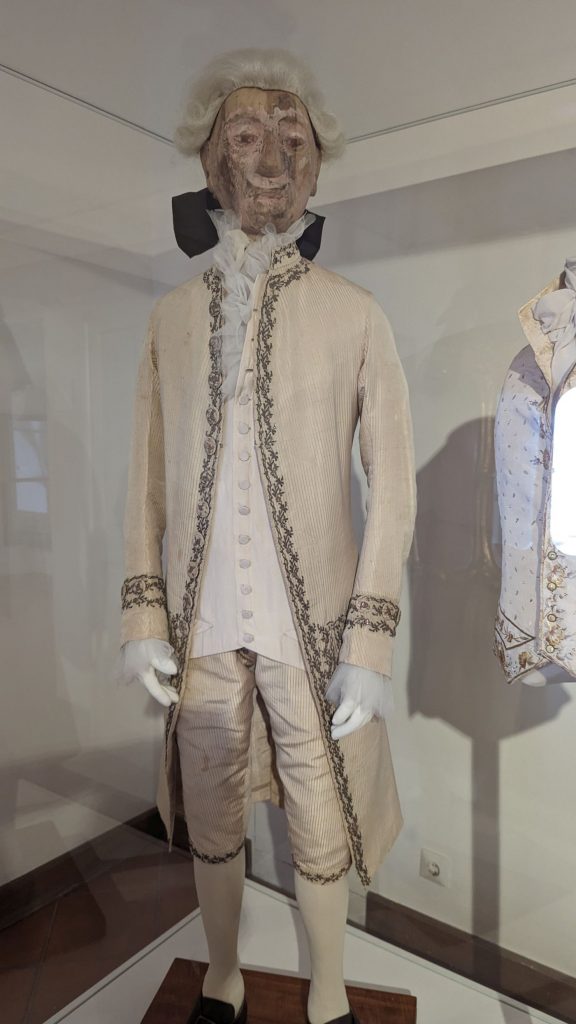
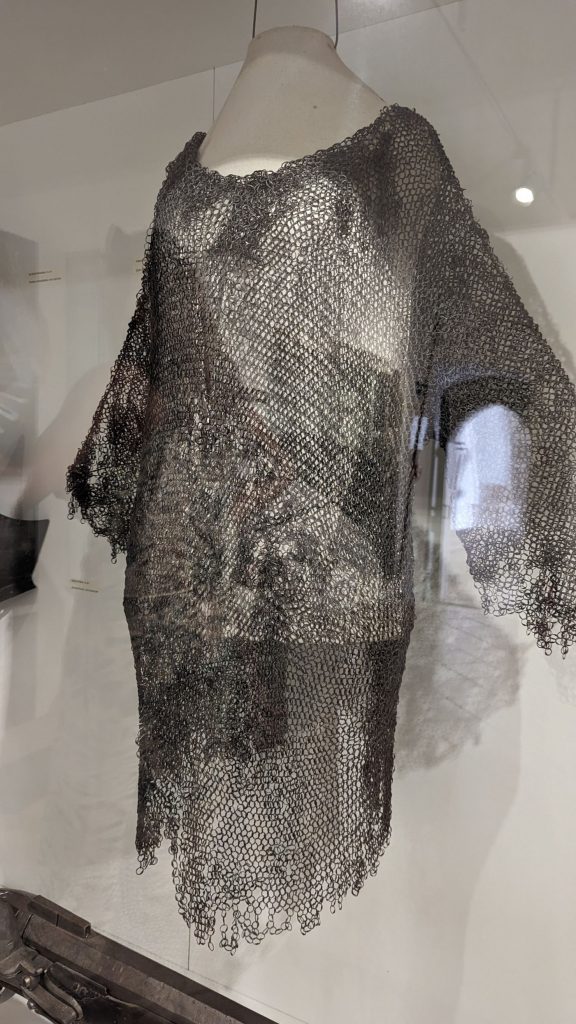
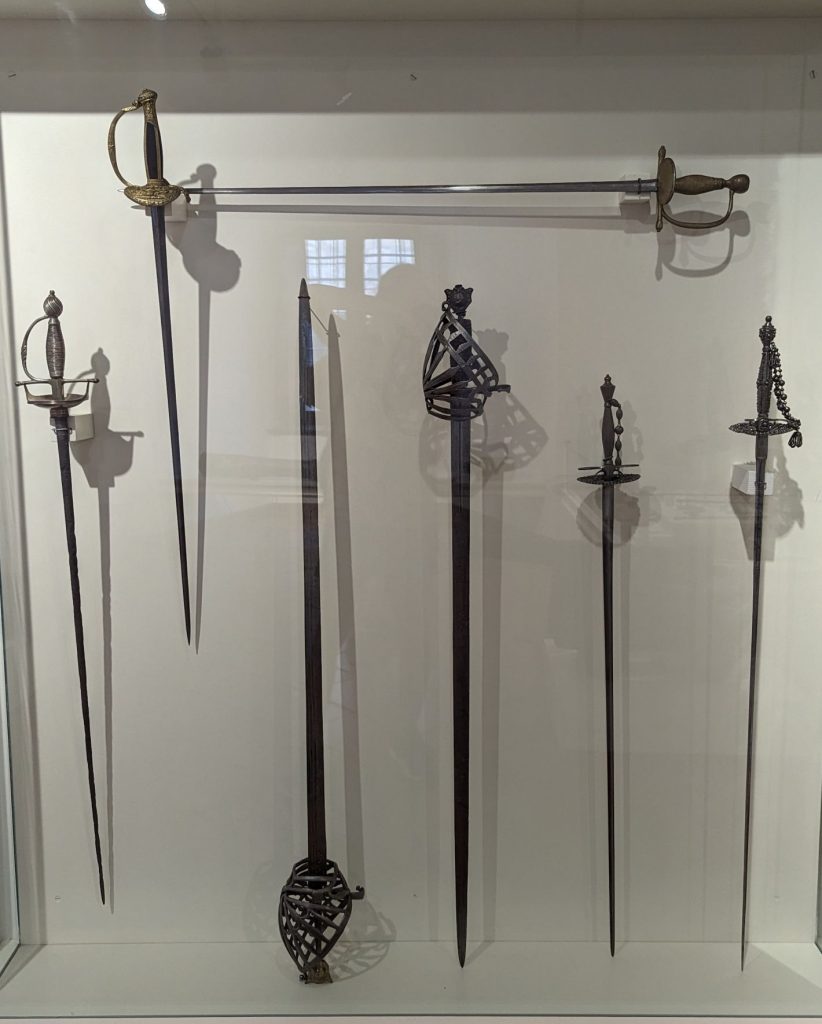
And what would you want to go around town in when you are in your fancy clothes? These!
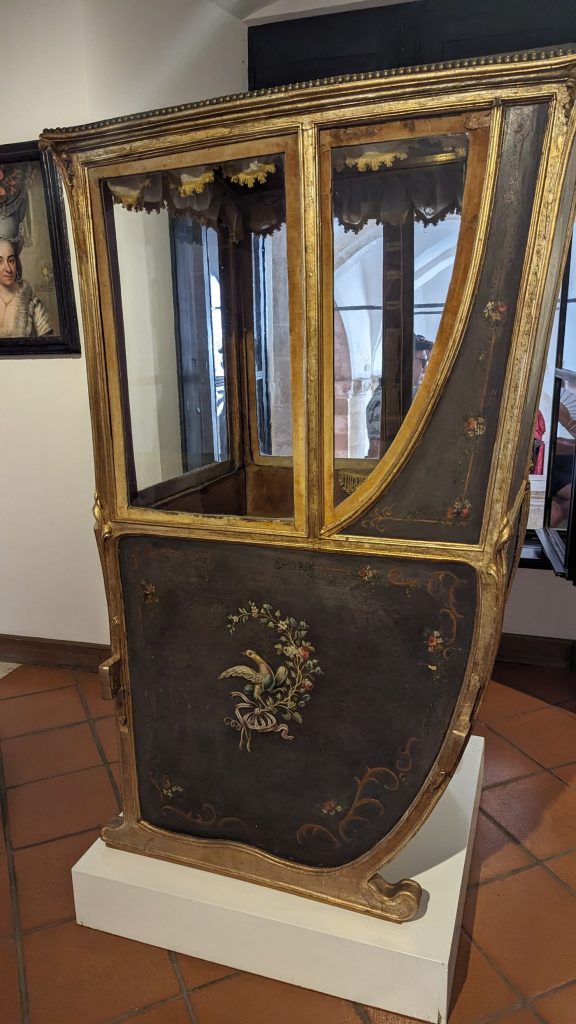
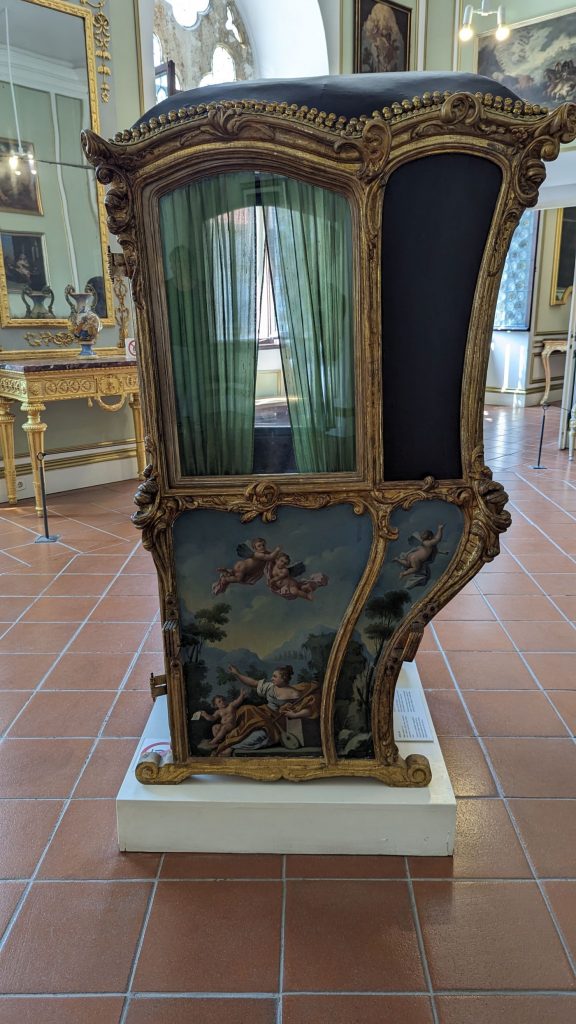
I am kind of a three-dimensional gal, so I always find myself drawn to anything three-dimensional. This museum sated my desire for such artwork in many forms. Here are some pictures of furniture and vases that fit the bill.
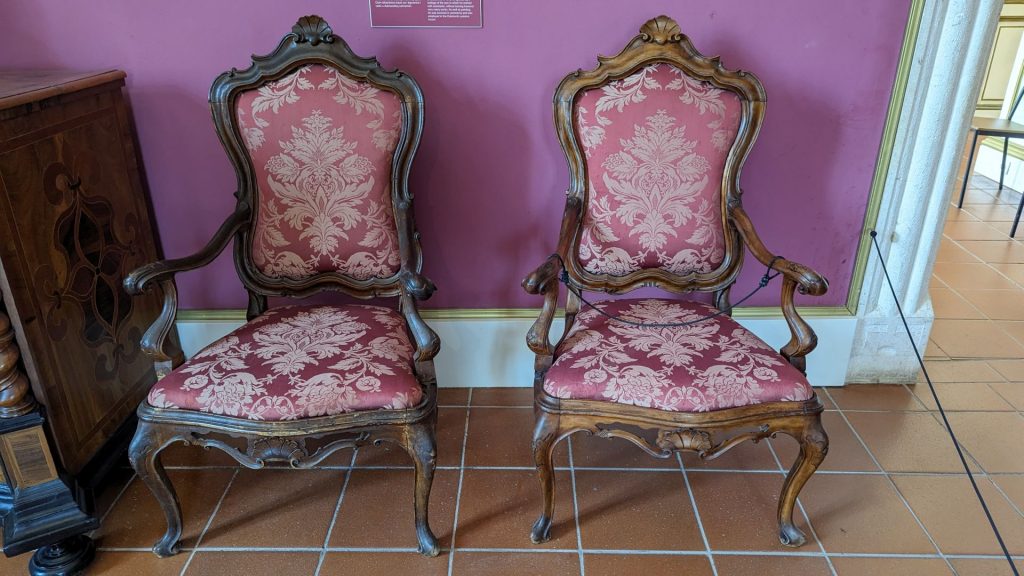
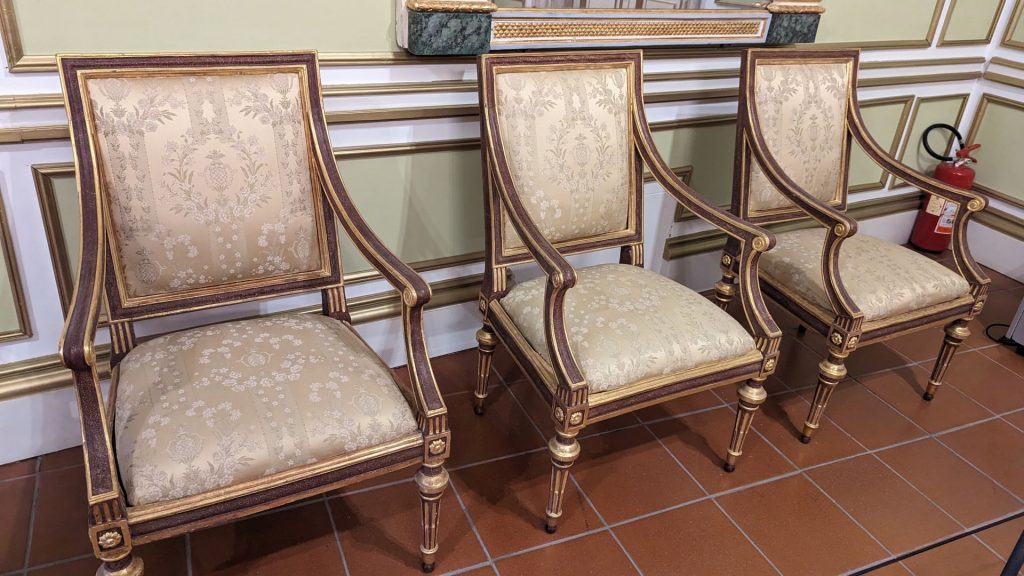
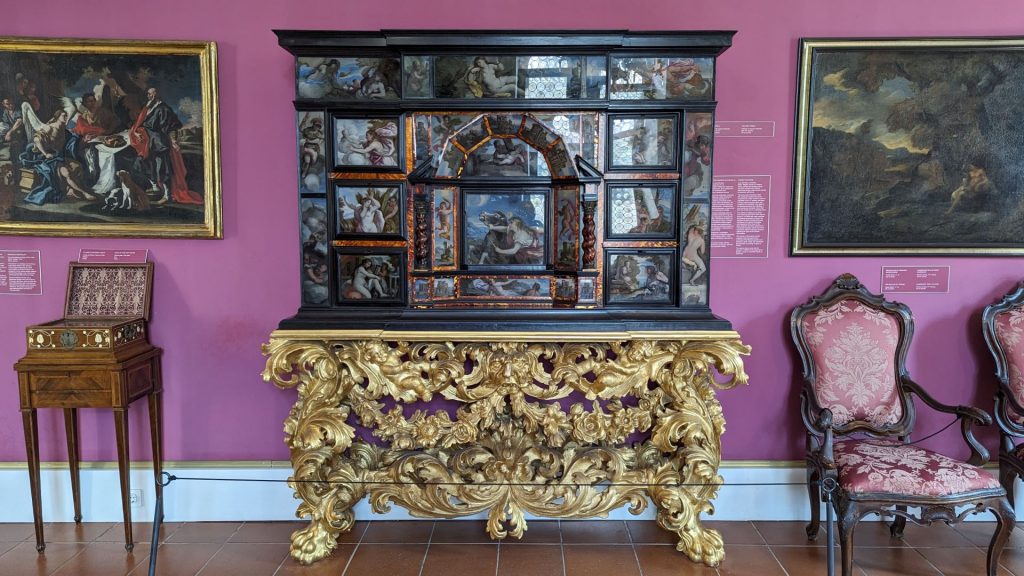
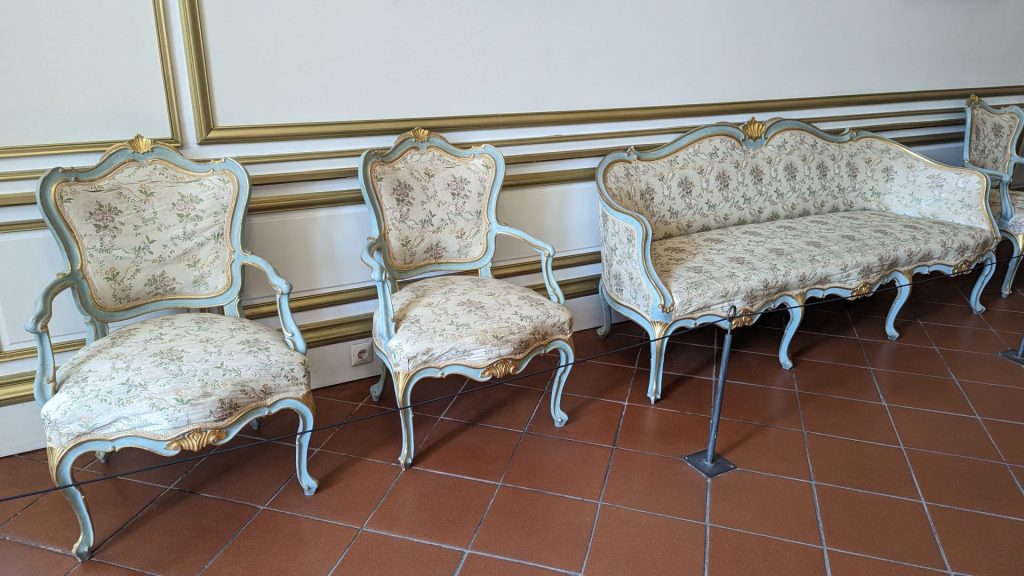
You thought I was just going to post the bottom left picture and move on, didn’t you? No way! It is just – too much. So, this piece of furniture, that I found garish and would never put in my home, was considered a luxury type of furniture. It is fitted with numerous drawers and secret compartments (okay, that part IS neat), and was used to house various precious items and collections of curiosities, in the spirit of the Baroque fondness for collecting.
Made of glass, painted with tempera; ebony and black painted wood, African blackwood veneer, wood carved and gilt; tortoiseshell; gilt bronze.
This particular cabinet is one of the most imposing specimens of this type of furniture. It is fitted with costly materials and painted decorations on glass, the repertoire of which consists of scenes and figures from ancient mythology with depictions of the loves of the gods. Implicit in the topics selected are moralizing messages, which was not an uncommon feature in Baroque furniture, reflecting the spirit of the Counter Reformation.
The manner of decoration and the materials used are typical of the workshop of the Baroque painter Luca Giordano (1632-1705), who introduced the technique of painting on glass in Naples.
Okay, now let’s look at some clocks and vases.
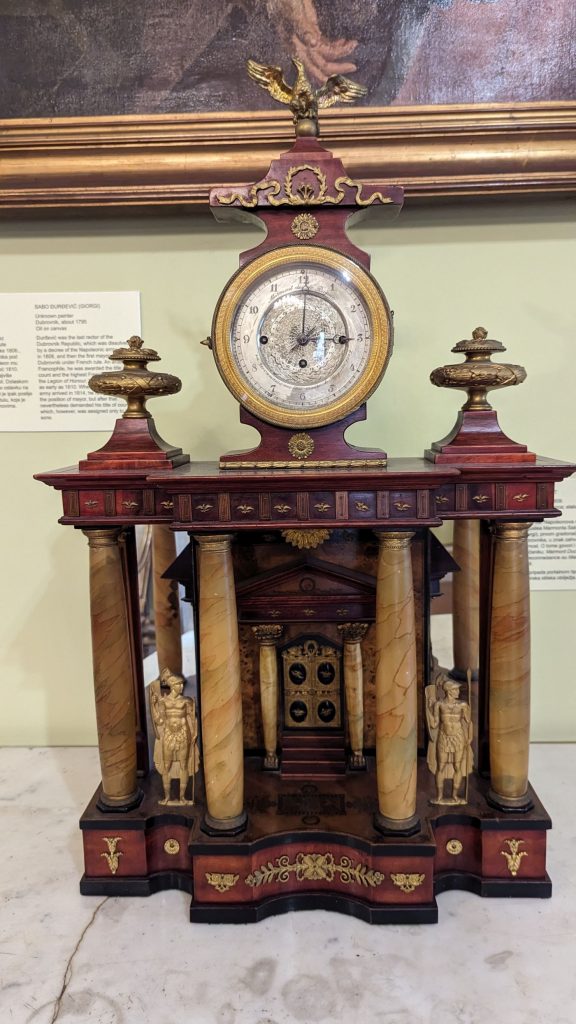
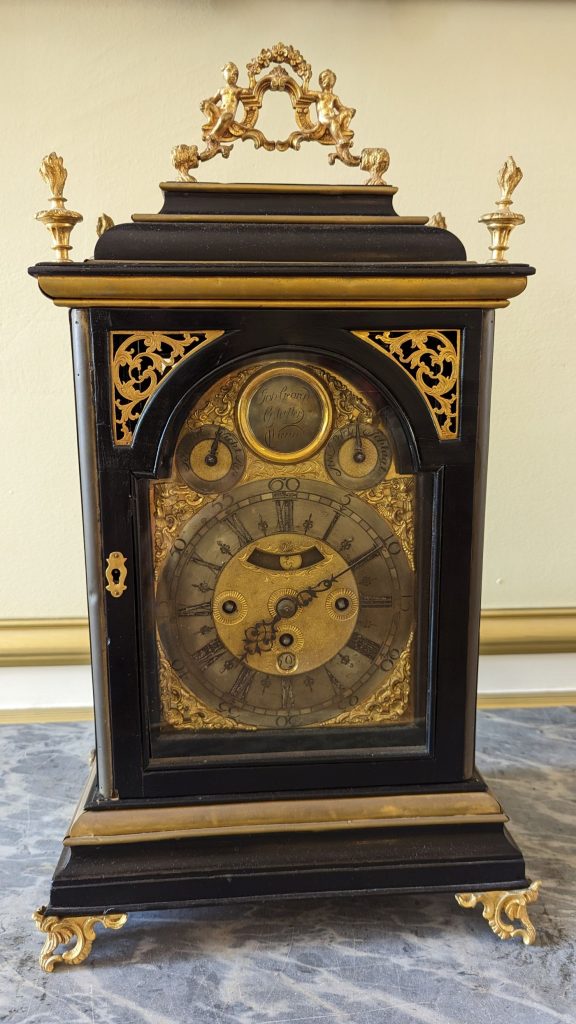
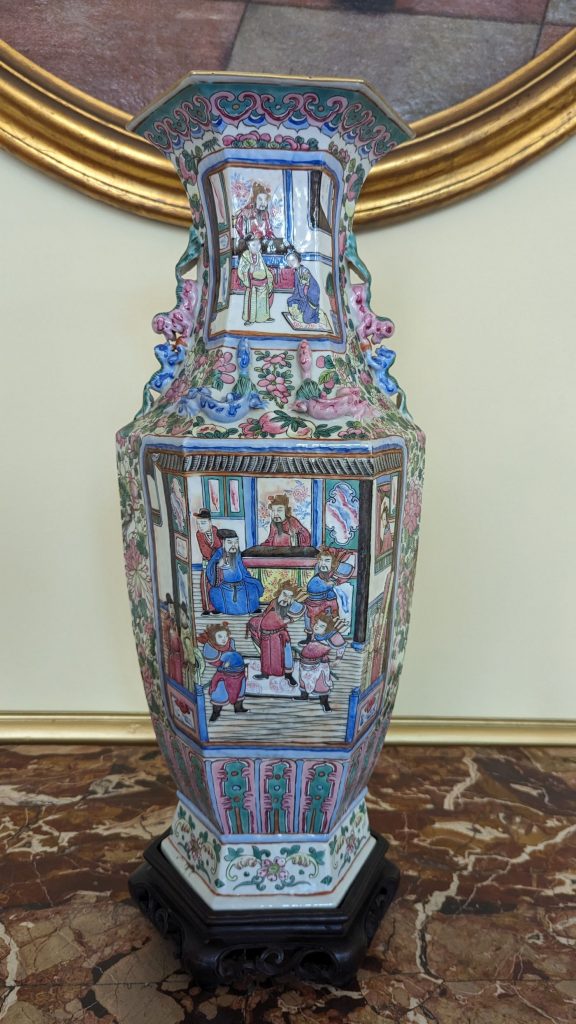
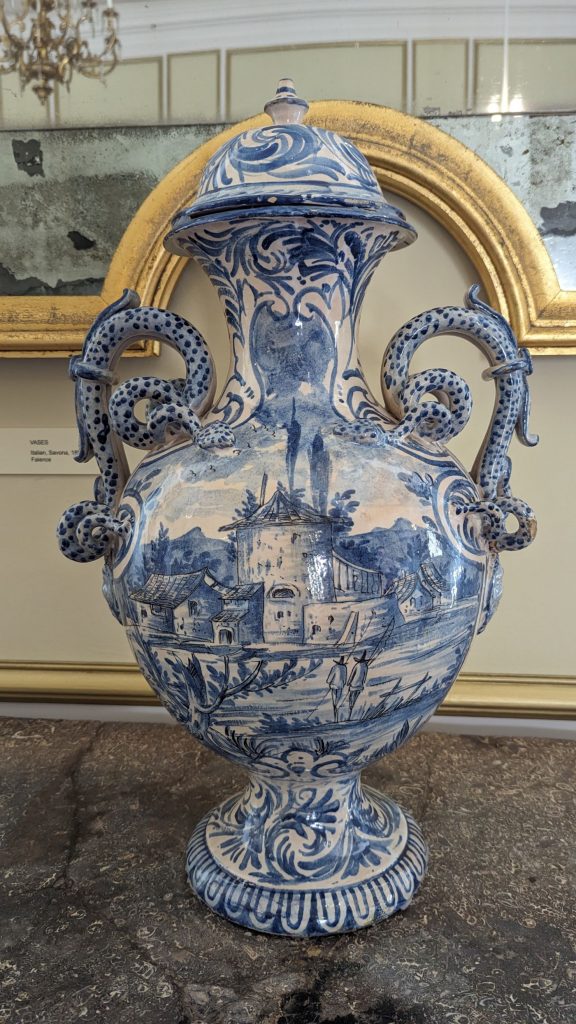
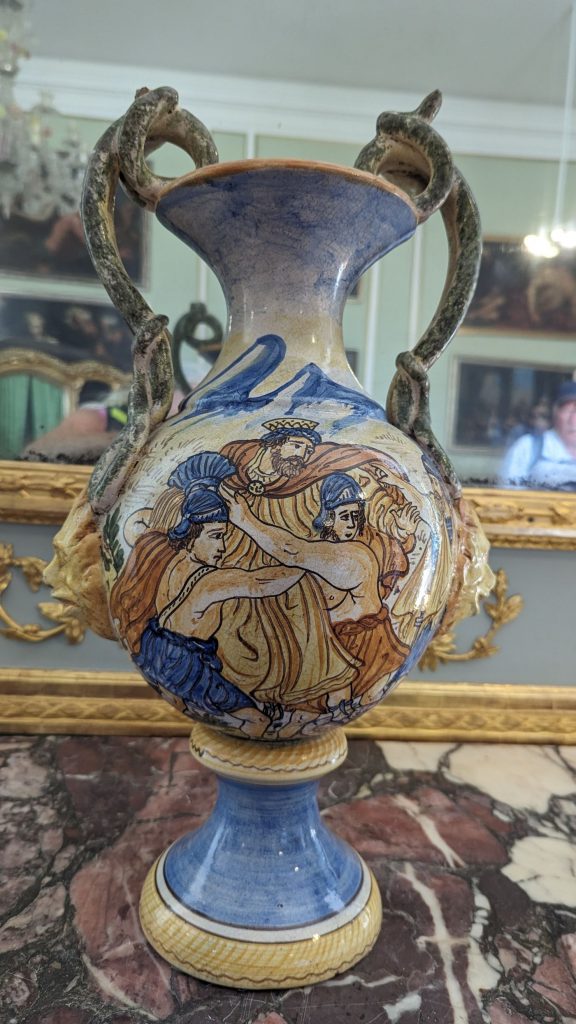
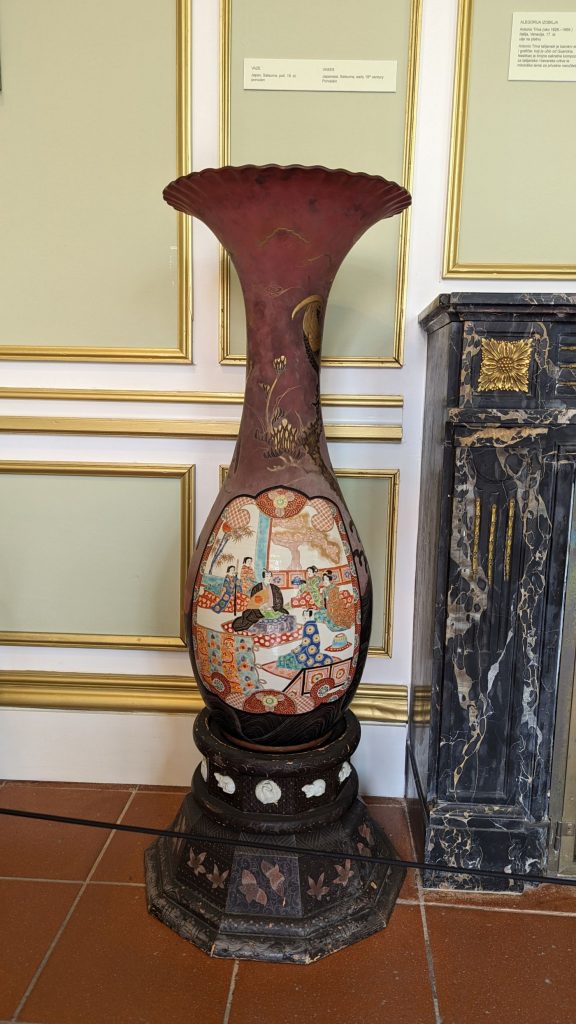
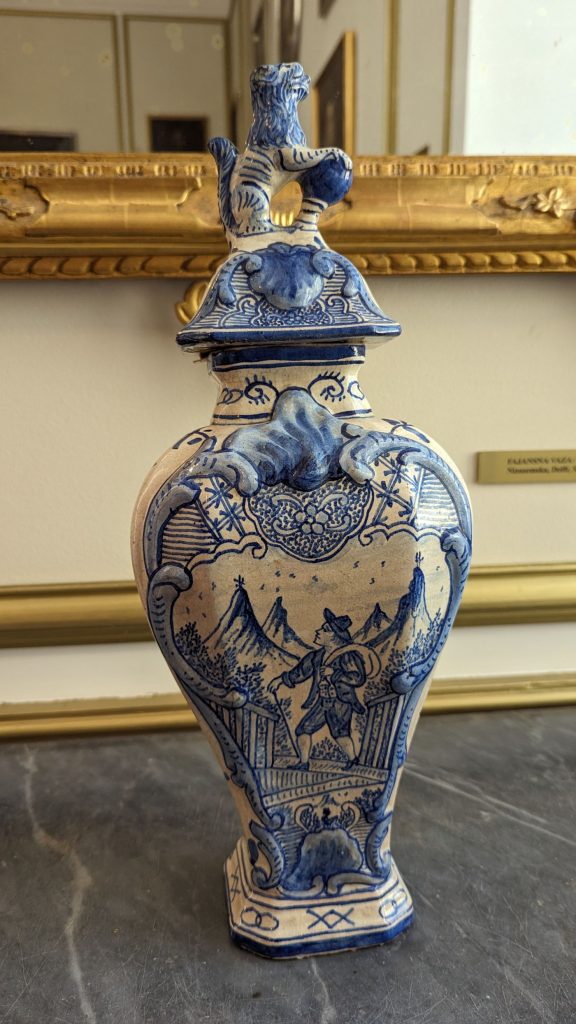
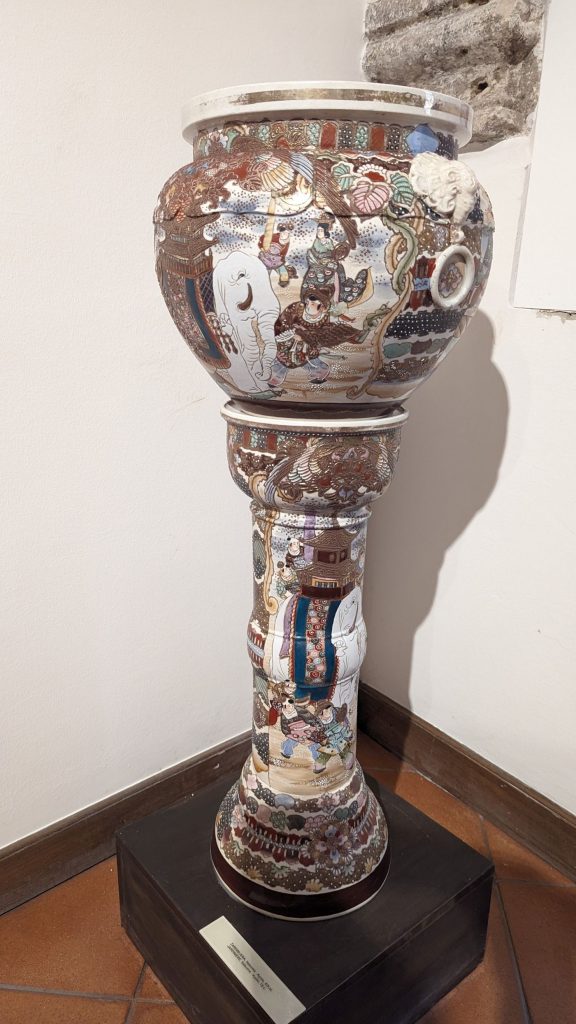
There is so much more to share but I am guessing that you have had enough. I will end the museum tour with a couple of pictures of the courtyard.
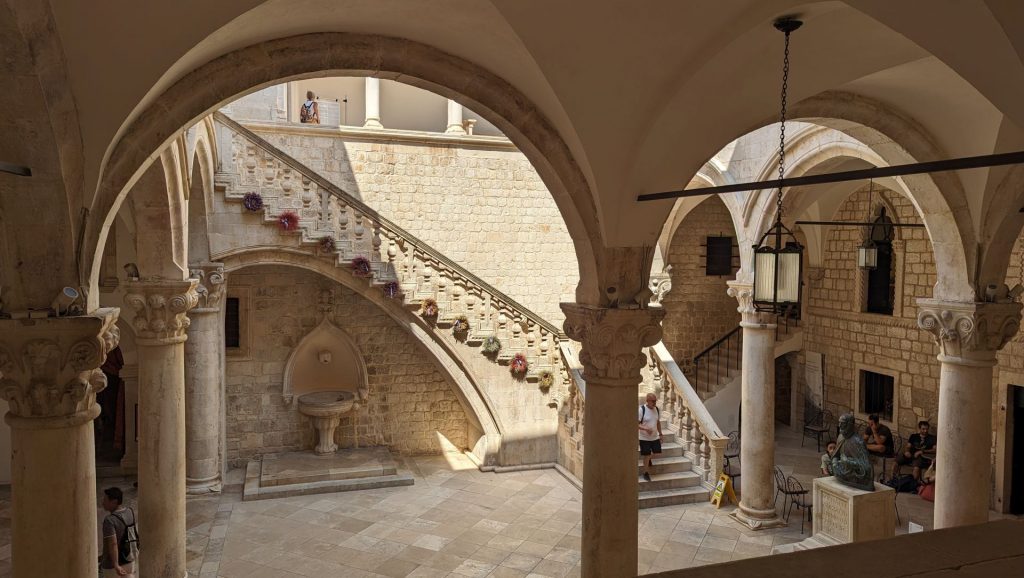
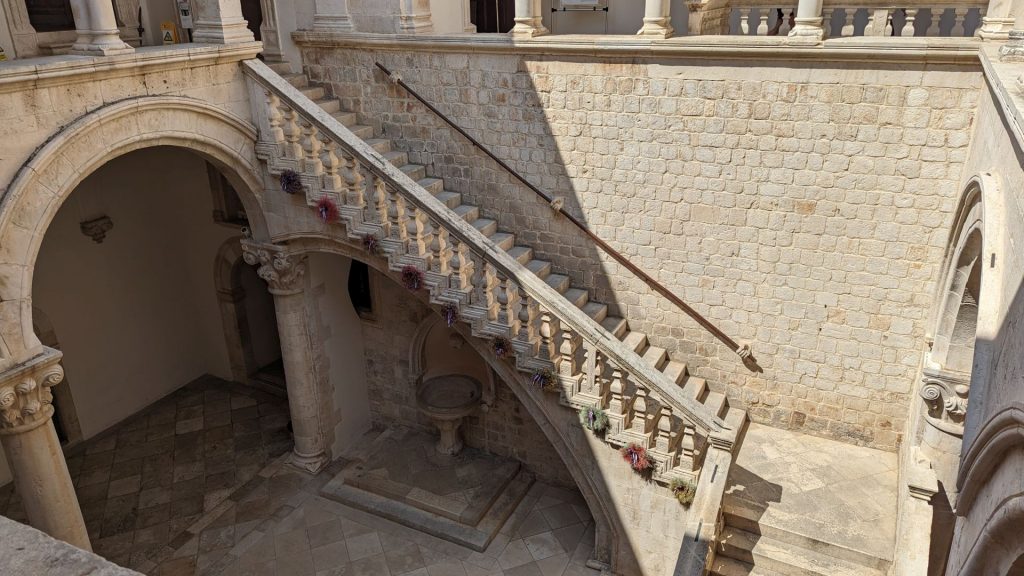
I walked around town a bit more before visiting the Foundry Museum, then stopped to buy groceries before heading to Seahike. I was really hot by that time and had run a bit of the way back to try to beat an impending storm. I wanted some pool time!
Here are a few more pictures of Old Town and from the walk home.
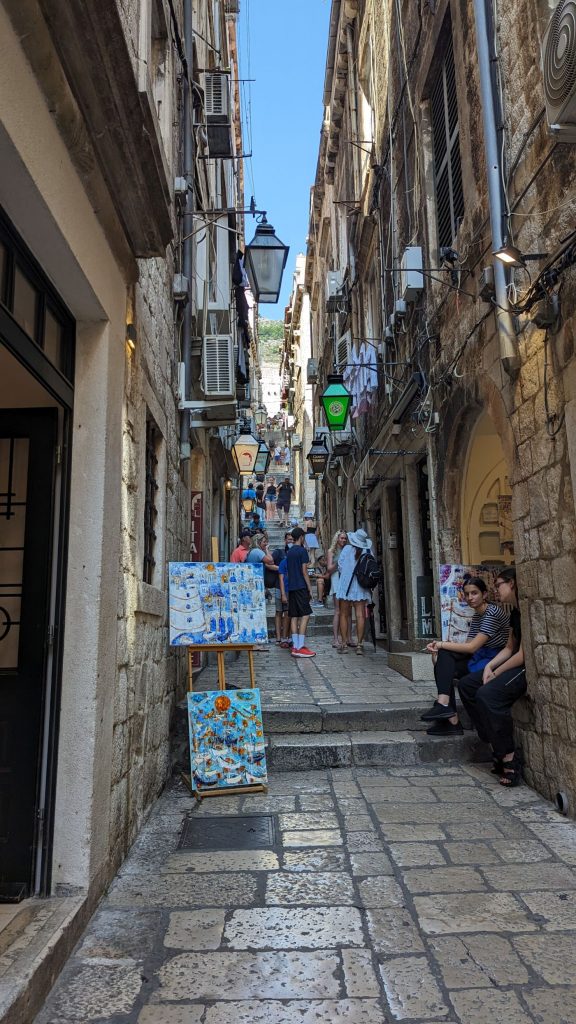
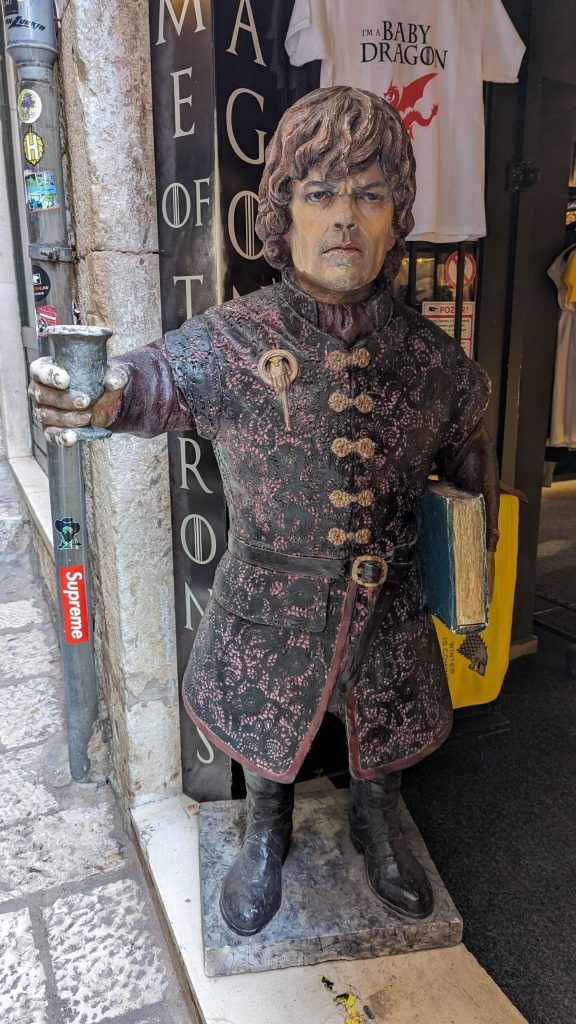
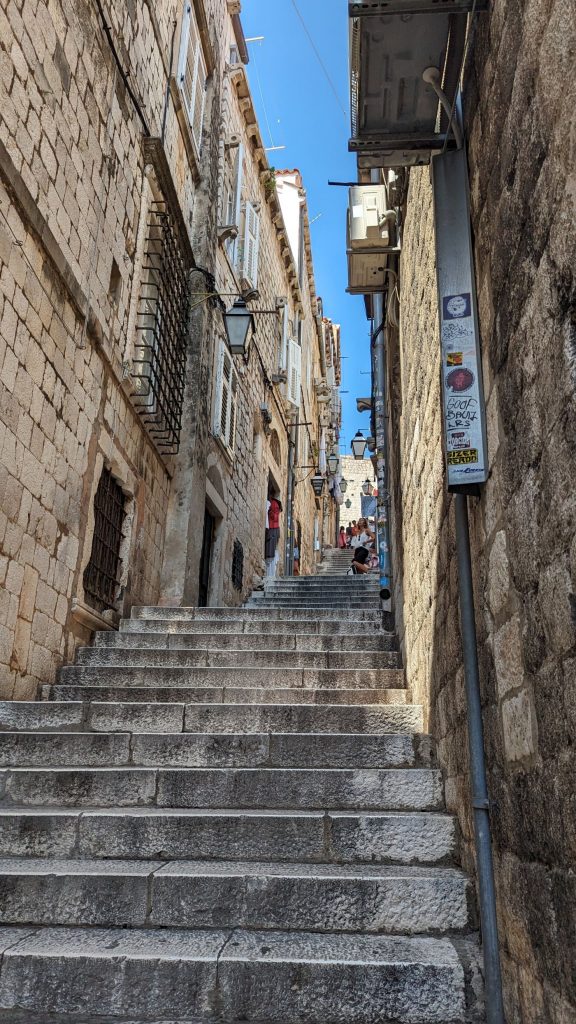
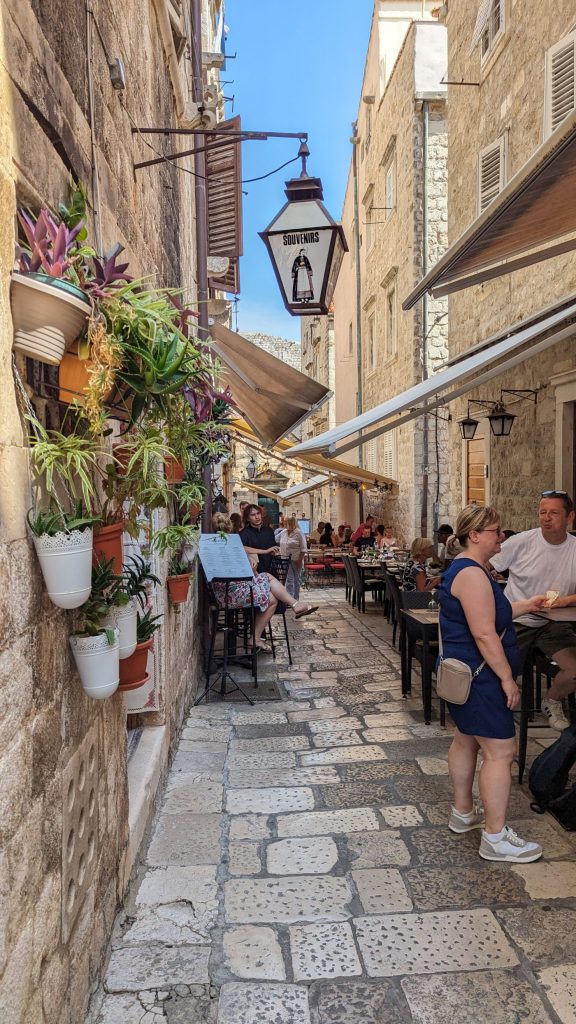
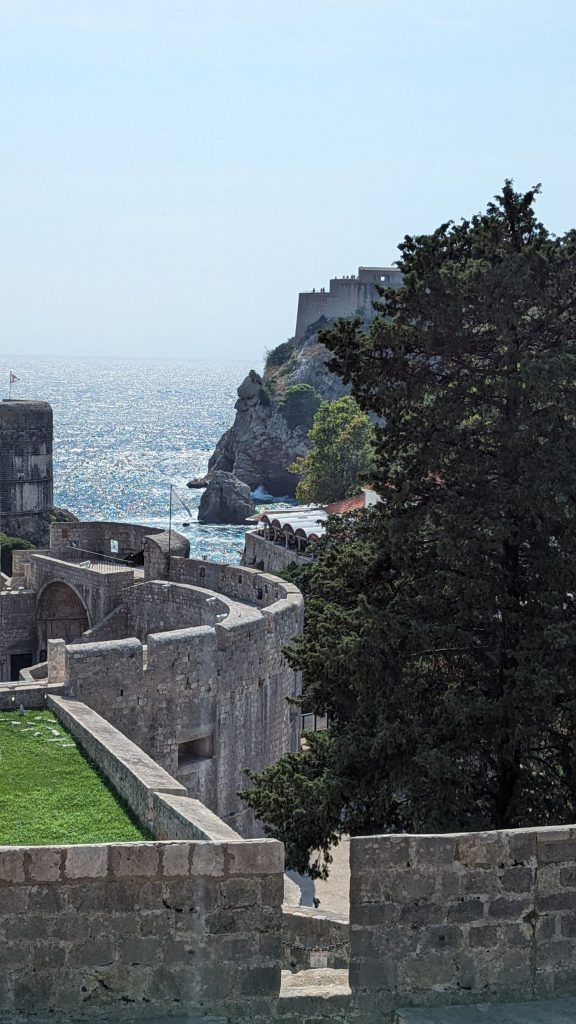
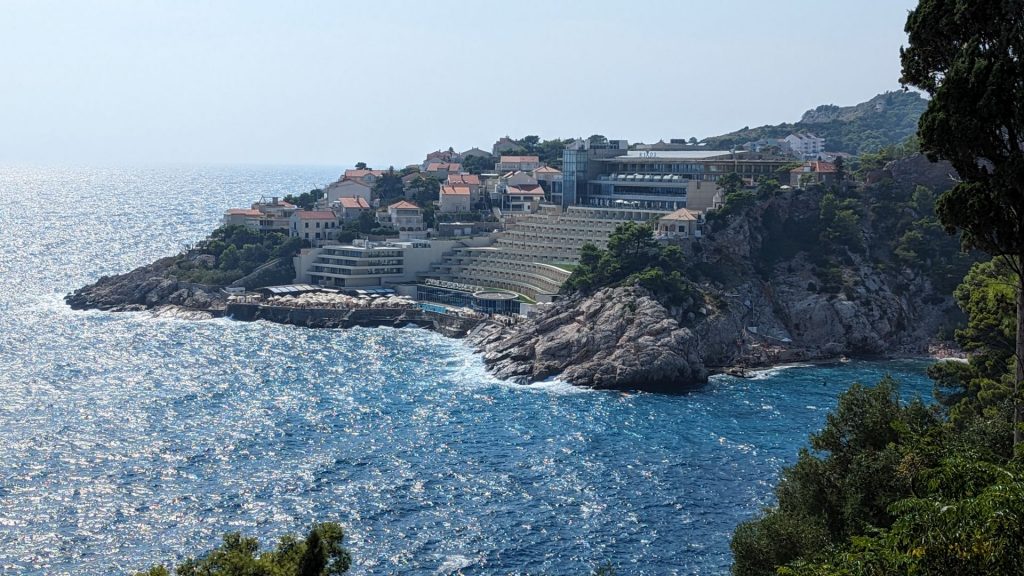
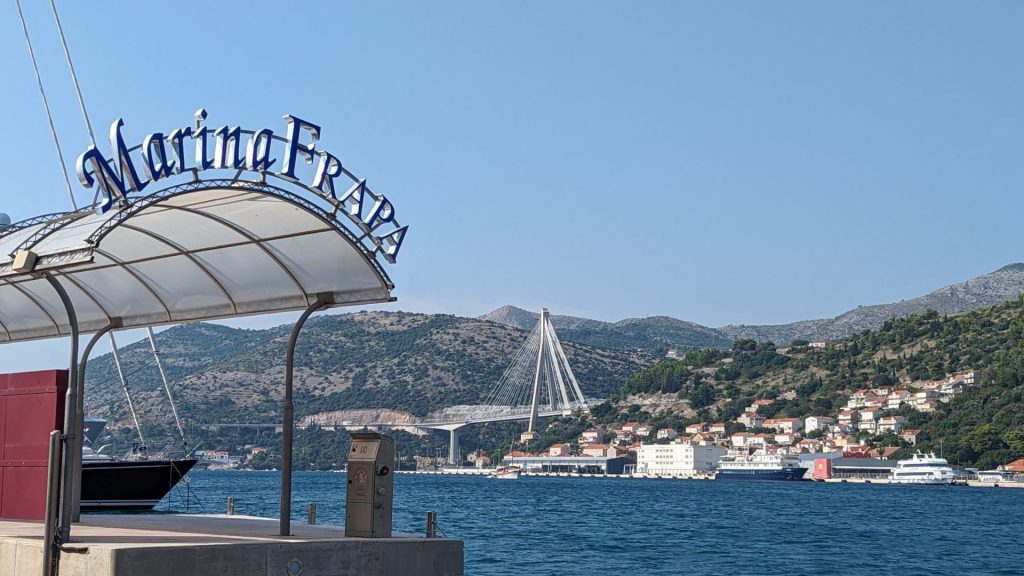
Happily, the storm didn’t arrive for another two hours so we had plenty of time to cool off and relax in the pool. I was in the middle of a good book, so I was ready to get back to it. This time I ordered a gin and tonic and was surprised when it came with a basil leaf and an orange slice. It usually comes with a lime wedge. It was very good, though, and kind of pretty.
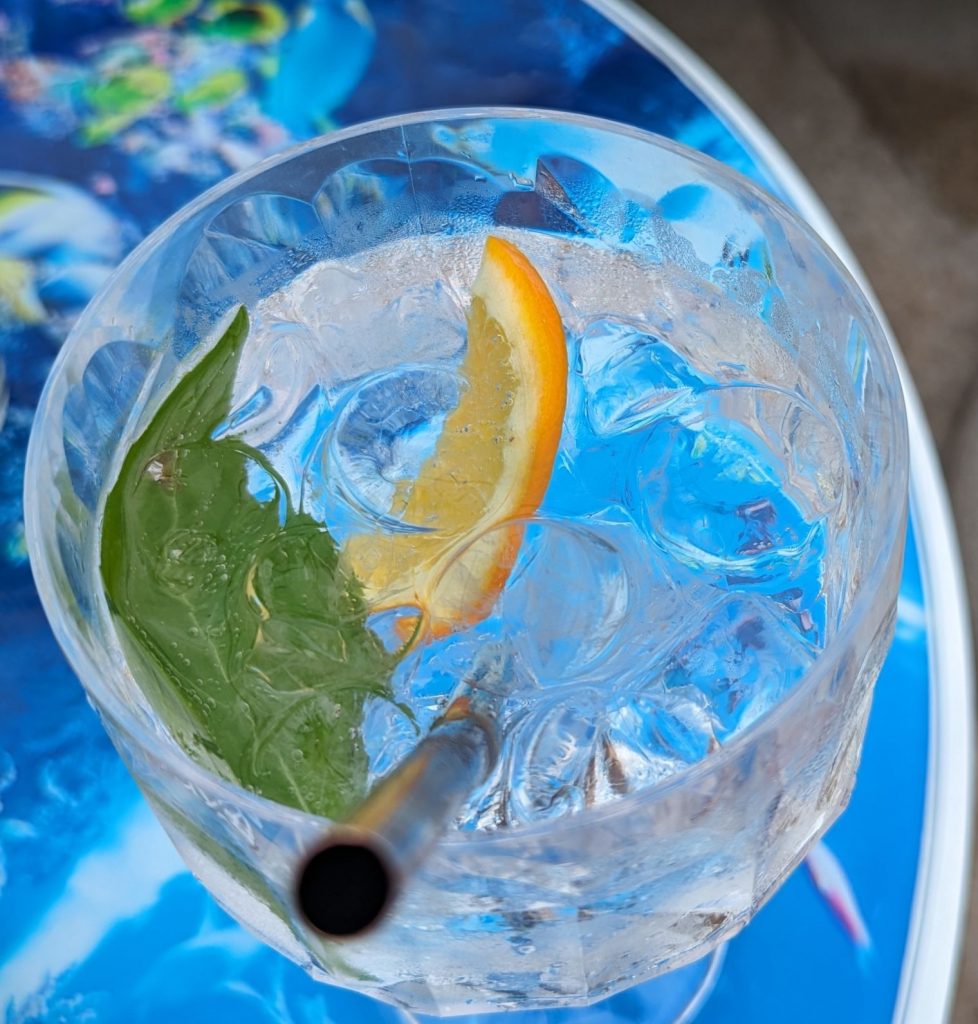
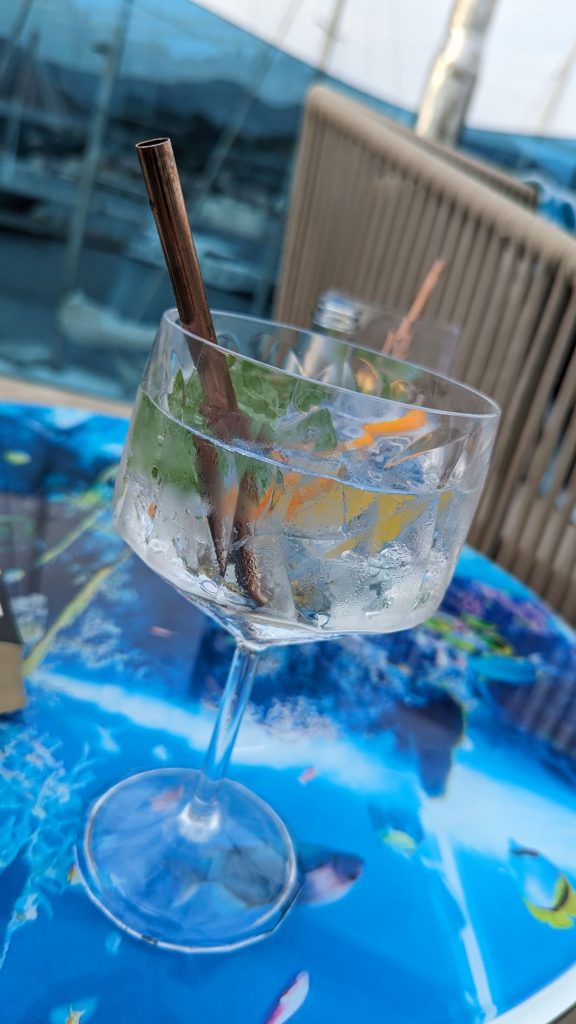
It was time to move on. Our next destination was a small bay on the east side of Mljet Island. We took off and headed into the direction of the winds and waves.
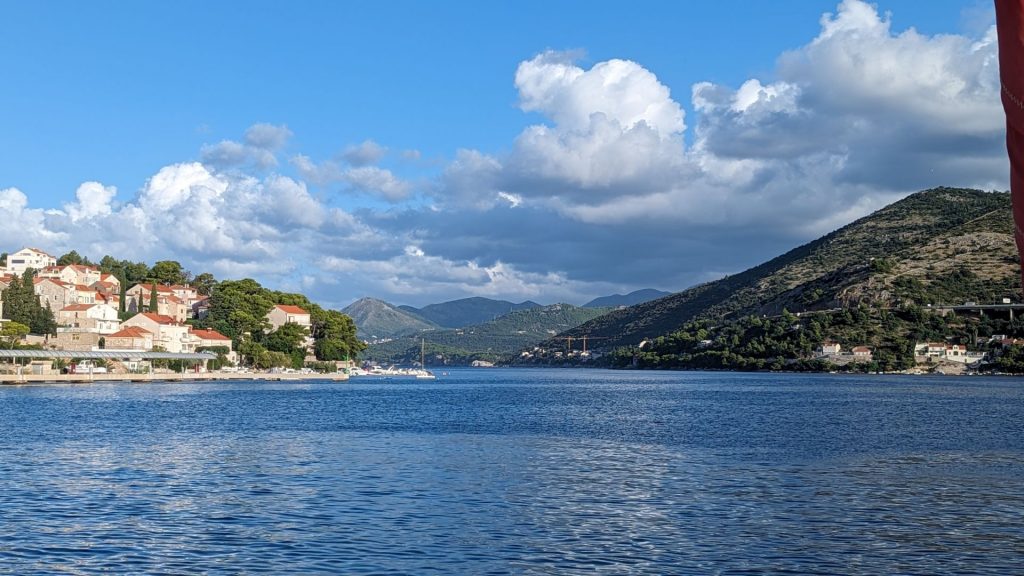
Michael was a good sport and took the helm the entire time. I’d made the mistake of not taking my sea sickness medicine until we were already underway, and the seas were rough. I ended up being entirely useless, lying down in the saloon, trying not to be sick. Luckily, the trip to our intended destination was only about a three-hour trip.
By the time we arrived in the little bay on Mljet Island it was mid-afternoon. The bay wasn’t as windy as the open sea, but still a bit windy. Our plan was to pick up a mooring ball free of charge and eat at the local restaurant. (If you eat at the local restaurant, the mooring ball is free – a common setup – but the restaurant can be expensive so it isn’t always a good deal.)
Let’s talk about this mooring ball. First, mooring balls usually have a small line attached on the top end which can rather easily be grabbed with a boat hook, provided the captain puts the boat in the right location adjacent to the ball so you can reach it. Well, this one didn’t. It just had a small, hard plastic loop. At first, I tried to snag the line on the bottom of the ball, but that didn’t work. So Michael came at the ball again and this time I tried to get the hook in the small hard plastic loop. I did, but the boat started to blow backwards and I couldn’t get the hook out of the loop. I told Michael, “I am losing the boat hook,” and he came running to the front of the boat. It was too late. I’d already decided which choice I would make between these three: 1) dislocate my shoulder (okay, maybe not, but my arm only stretches so far before something gives), 2) jump in the water and hold onto the boat hook while it is attached to the mooring ball, or 3) let go of the boat hook. I wisely selected #3.
So now it was time to get in the dinghy to: 1) retrieve the boat hook, 2) go to the mooring ball and catch the line Michael threw to me, put it through the hole, and throw the end back to Michael so he can tie it to the starboard cleat, and 3) repeat on the port side.
So, now we were all tied up and good to go. Here are scenes of the bay and that hard-to-pick-up mooring ball.
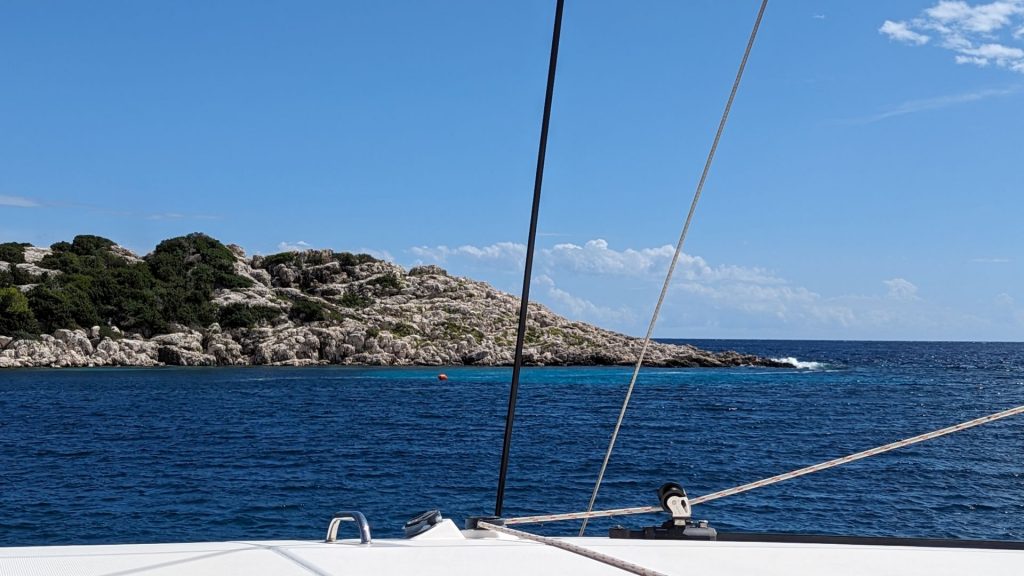
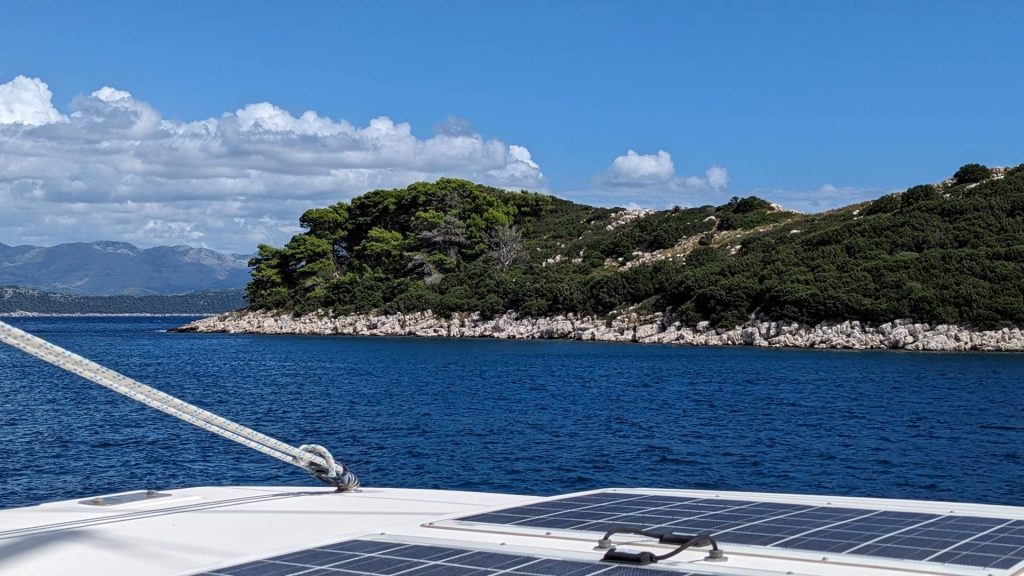
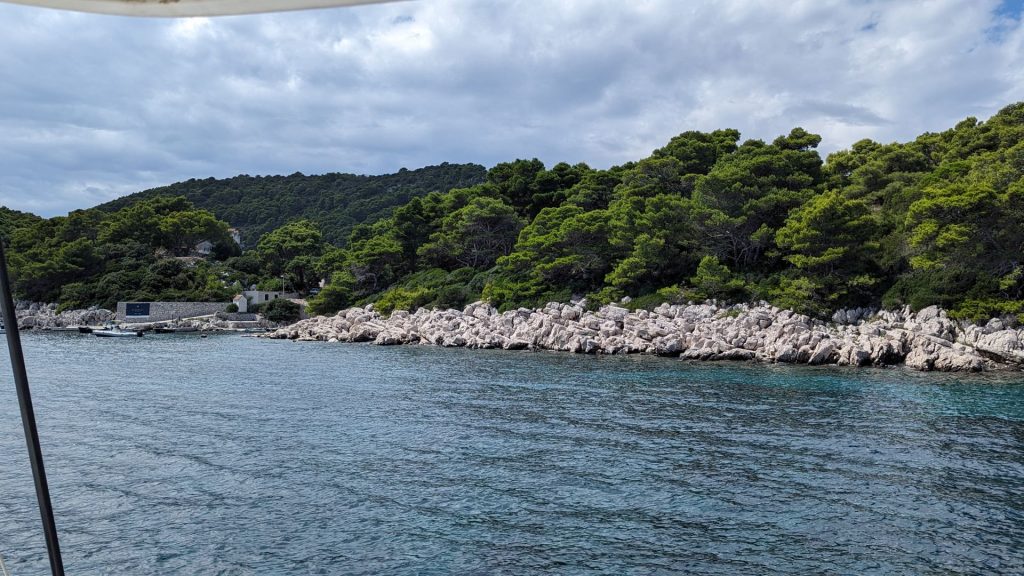
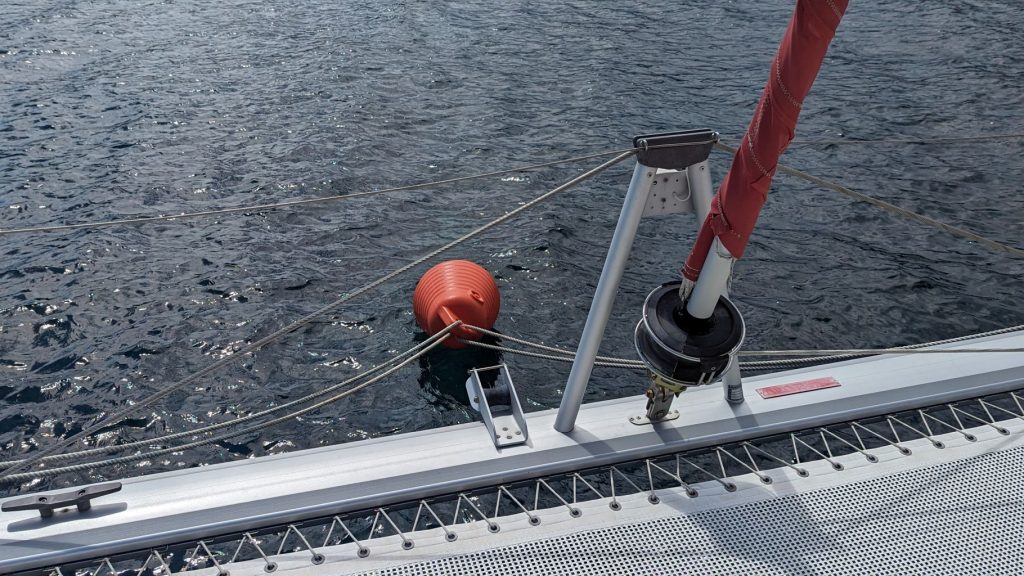
We ate at Stermasi restaurant that night, but first we took a very short walk to the other side of the island. We found a nice little beach (Saplunara) where we would have had a nice swim in the surf had we stayed longer.
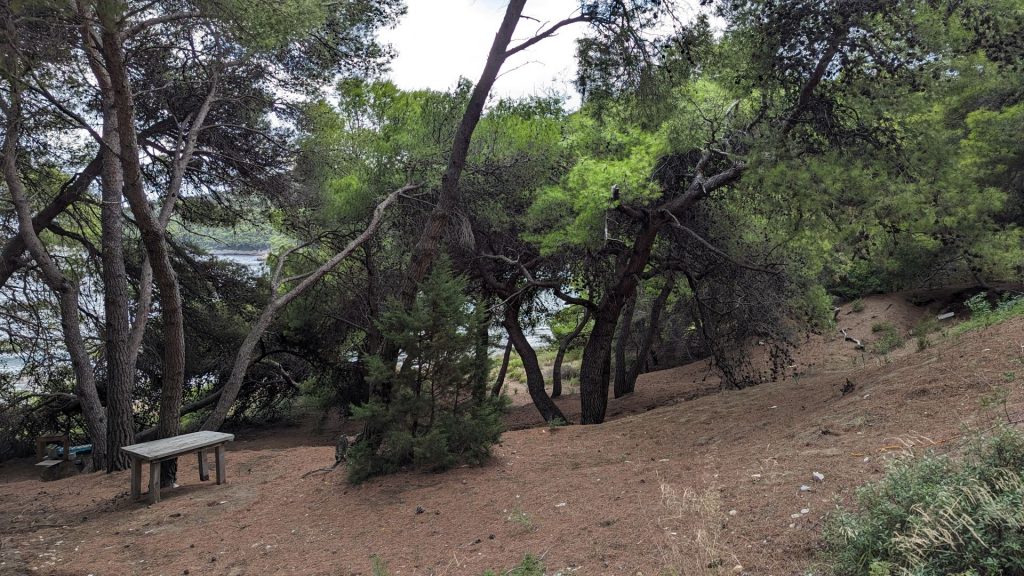
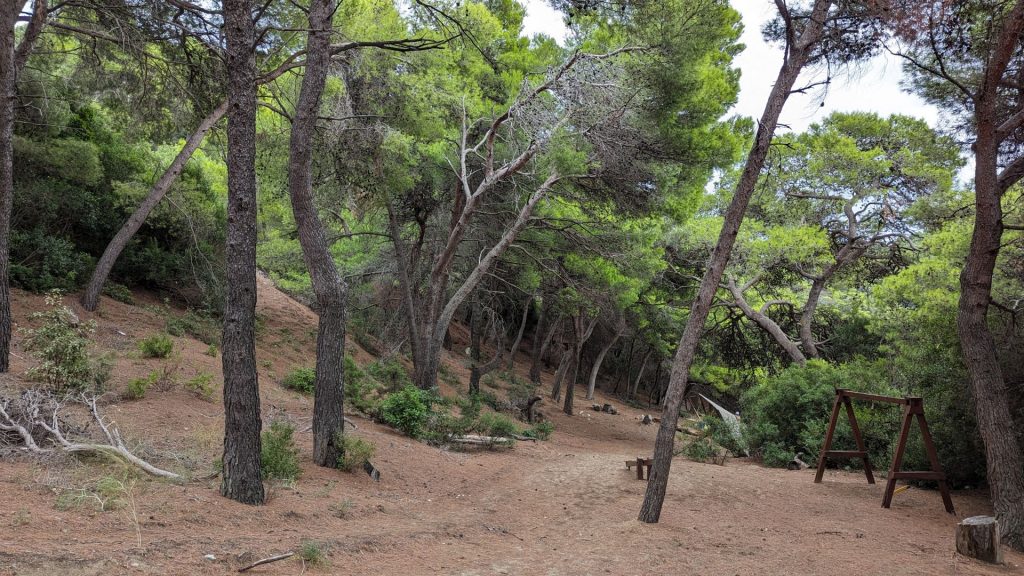
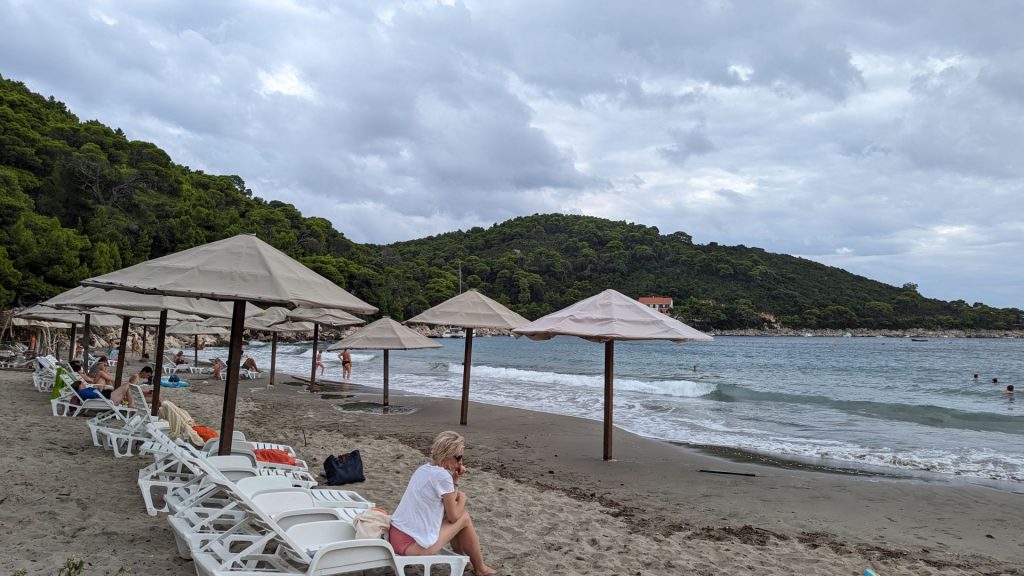
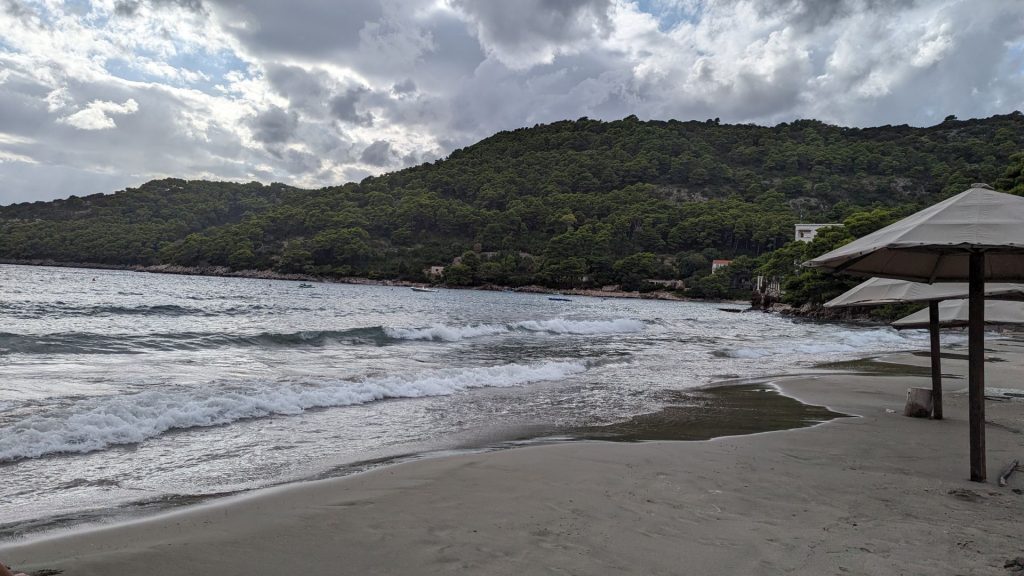
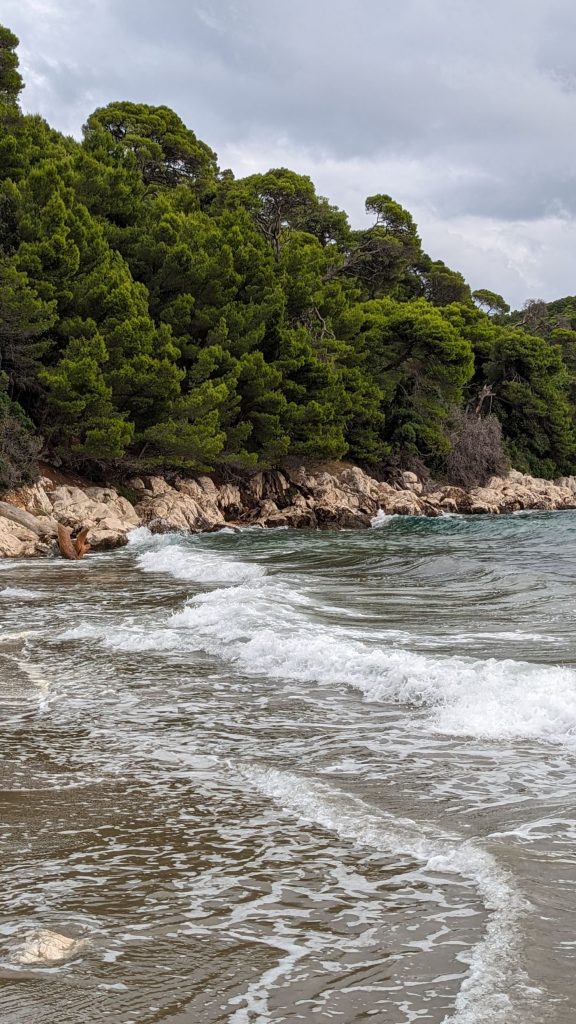
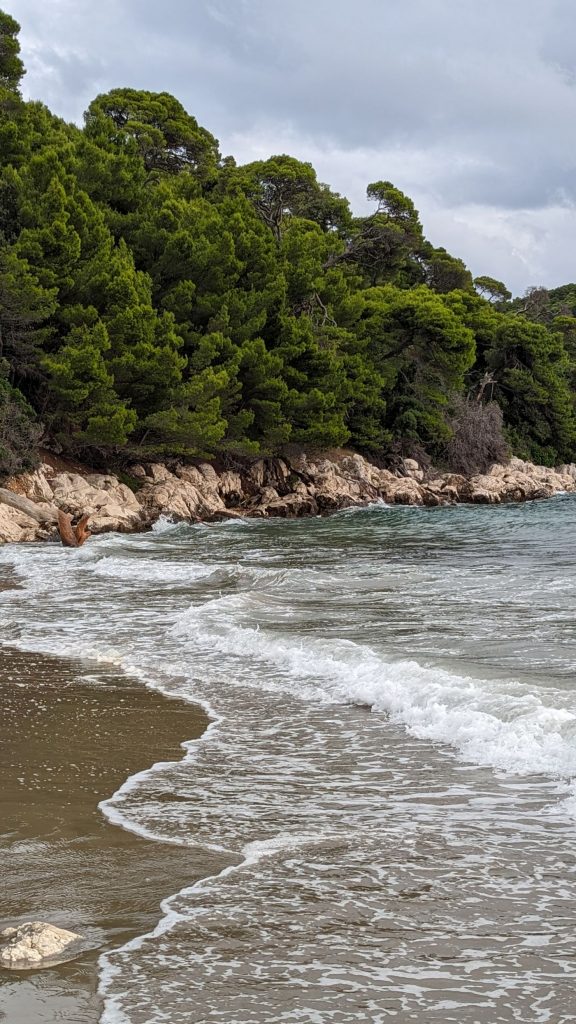
As I noted above, we ate dinner at Stermasi Restaurant. This is a special restaurant for several reasons. For one, the location is perfect, and they have designed their eating area to accommodate the natural variations in the landscape. In short, there are different levels to the eating area. Plus, the views are fabulous! Check them out:
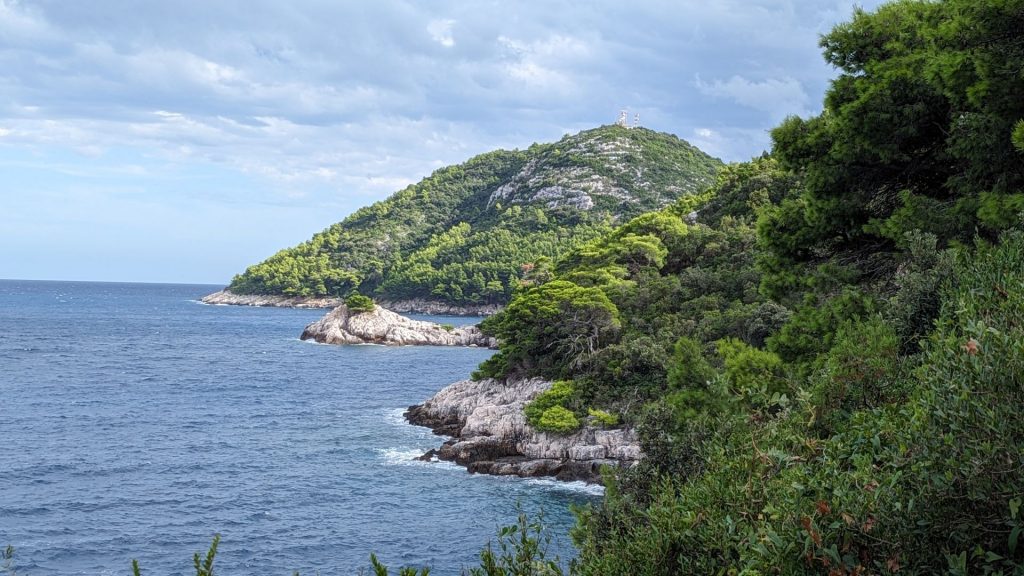
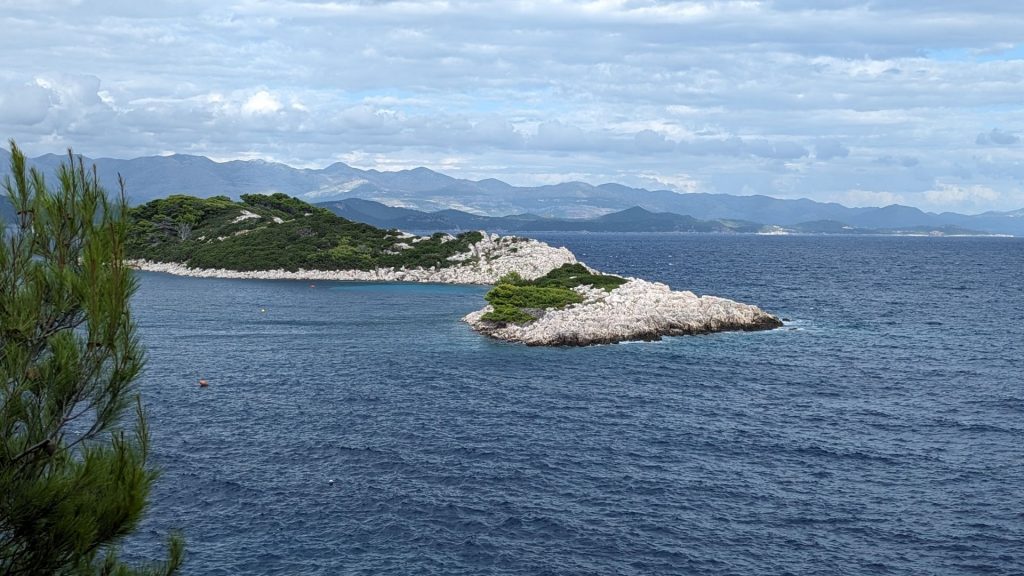
Now let’s talk about the food. This restaurant has its own farms where it grows over 21 kinds of vegetables to serve in their restaurant. They are hand grown and not treated with any pesticides. The food is spectacular. I selected one of the daily specials for my meal. Here are pictures of: a little section of the outdoor seating area (they also have a small indoor seating area, which we used because rain was predicted), the little appetizer they provided, my meal, and the glass of rakija we each had after dinner:
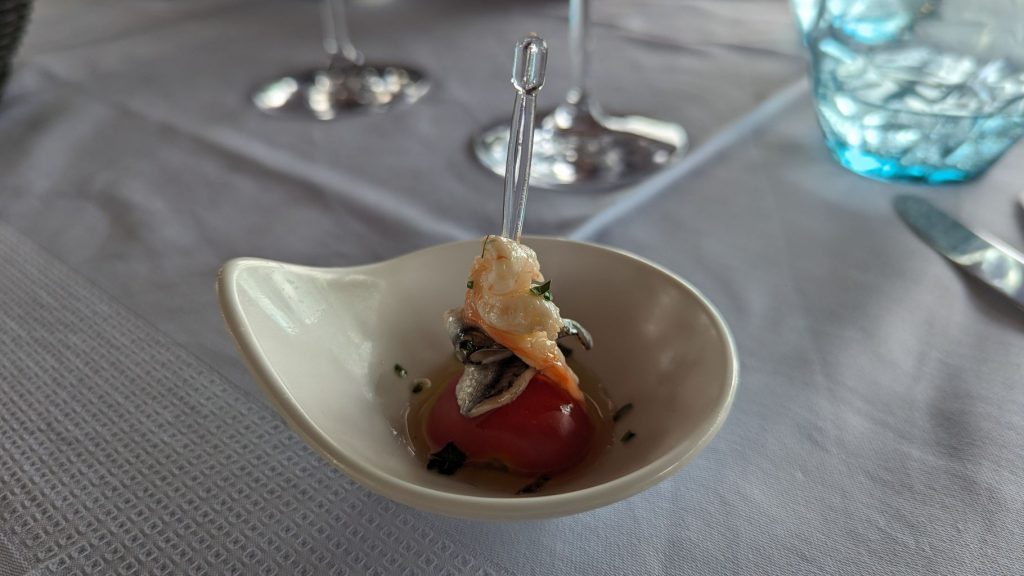
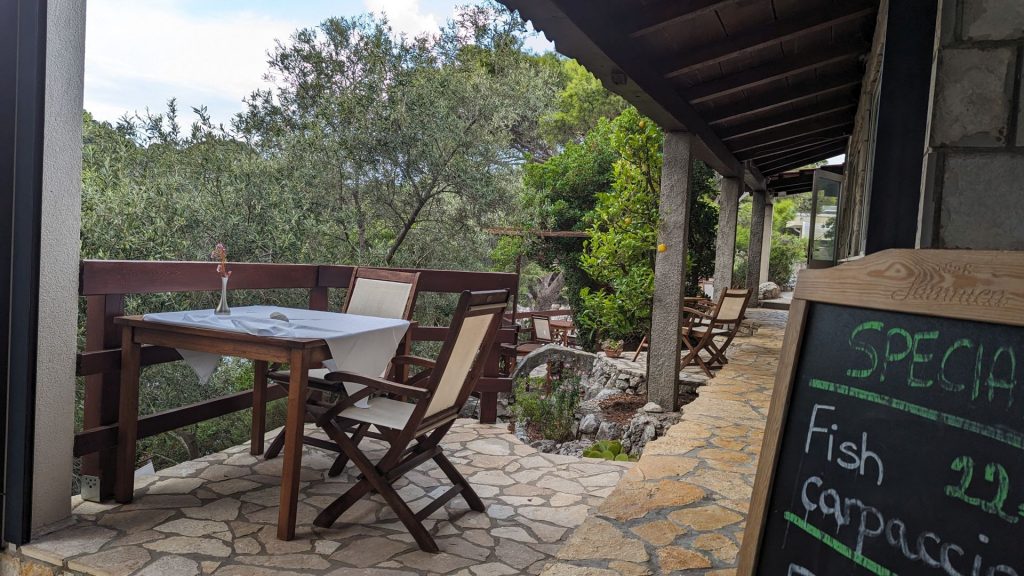
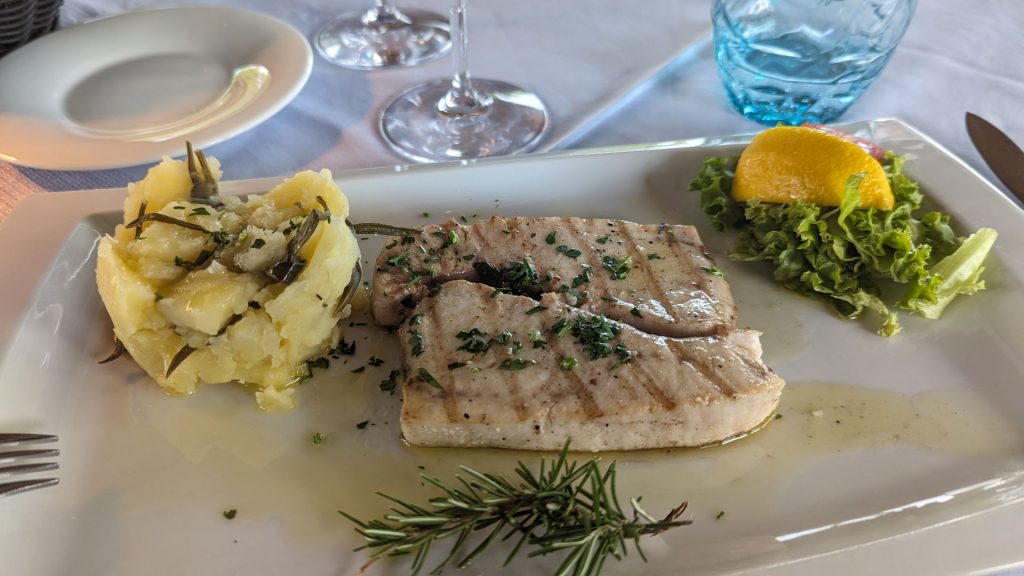
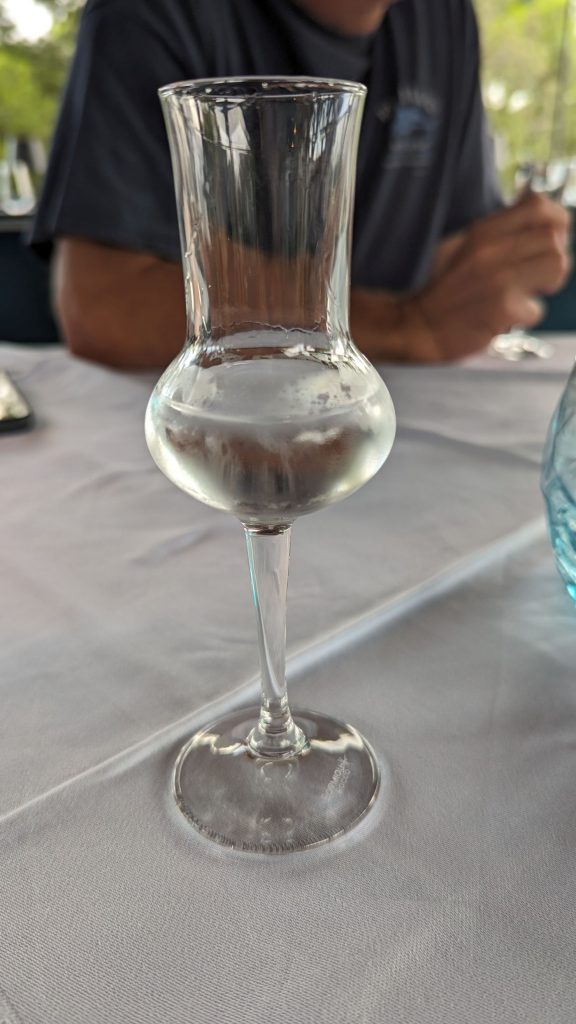
It was time to head back to Seahike for the night. The rain was on its way.
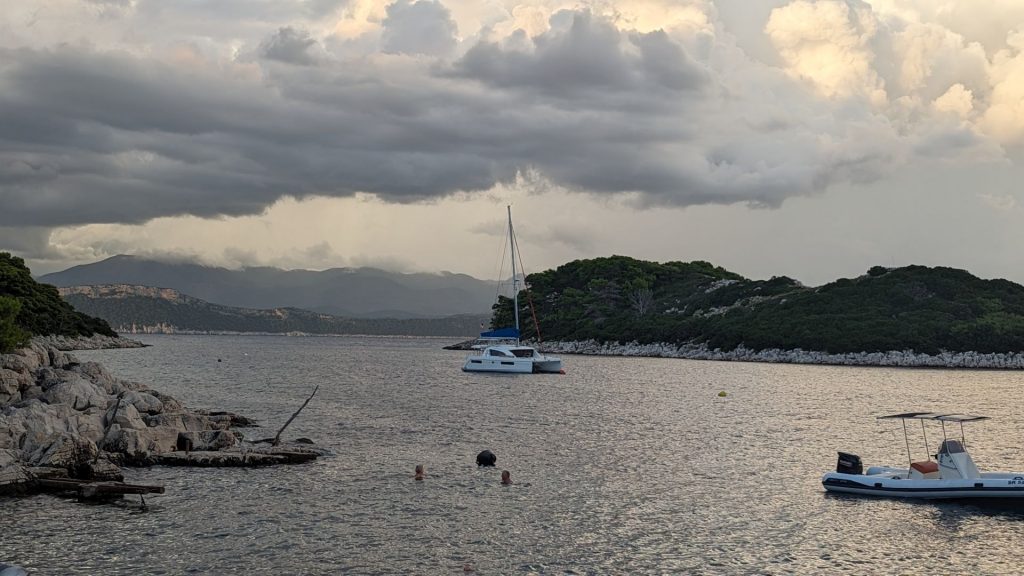
We will share more about our Croatian vacation in the next post.
